Formulations Of Monoclonal Antibodies
LOBO; Brian ; et al.
U.S. patent application number 16/488302 was filed with the patent office on 2020-09-10 for formulations of monoclonal antibodies. This patent application is currently assigned to MEDIMMUNE LIMITED. The applicant listed for this patent is MedImmune Limited. Invention is credited to Deborah Sweet GOLDBERG, Brian LOBO, Ambarish Umakant SHAH, Monika Sood SHARMA.
| Application Number | 20200283516 16/488302 |
| Document ID | / |
| Family ID | 1000004913797 |
| Filed Date | 2020-09-10 |
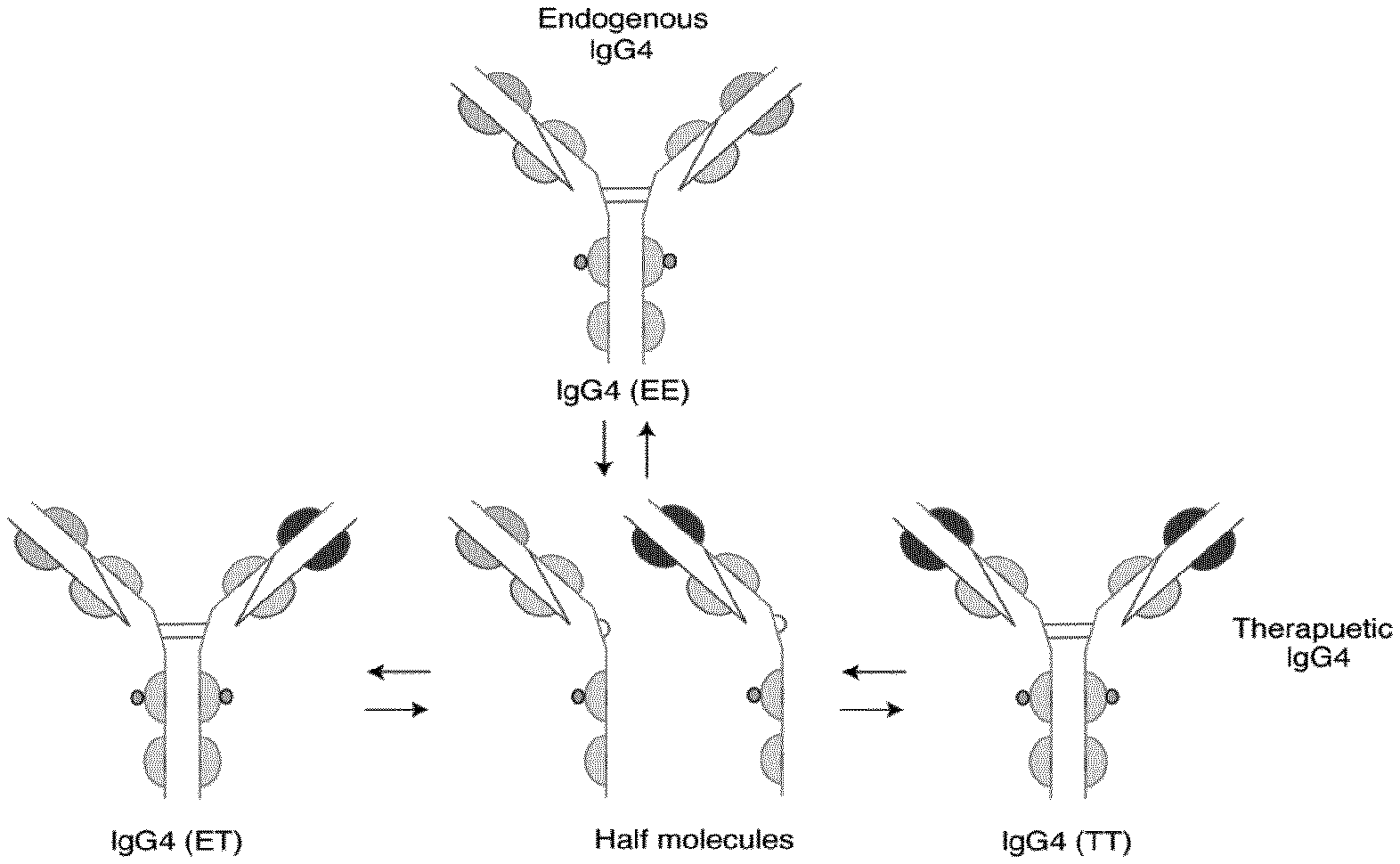
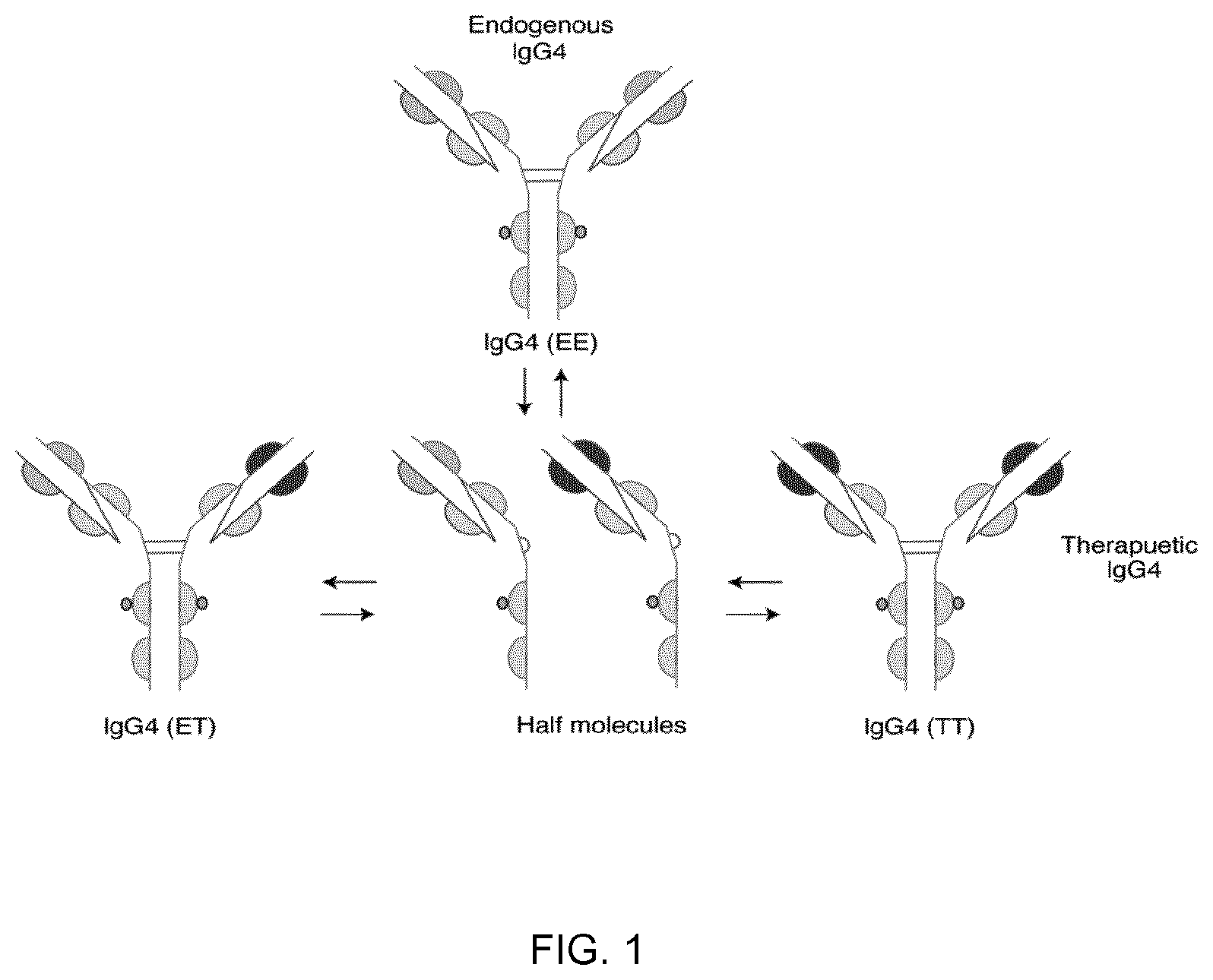
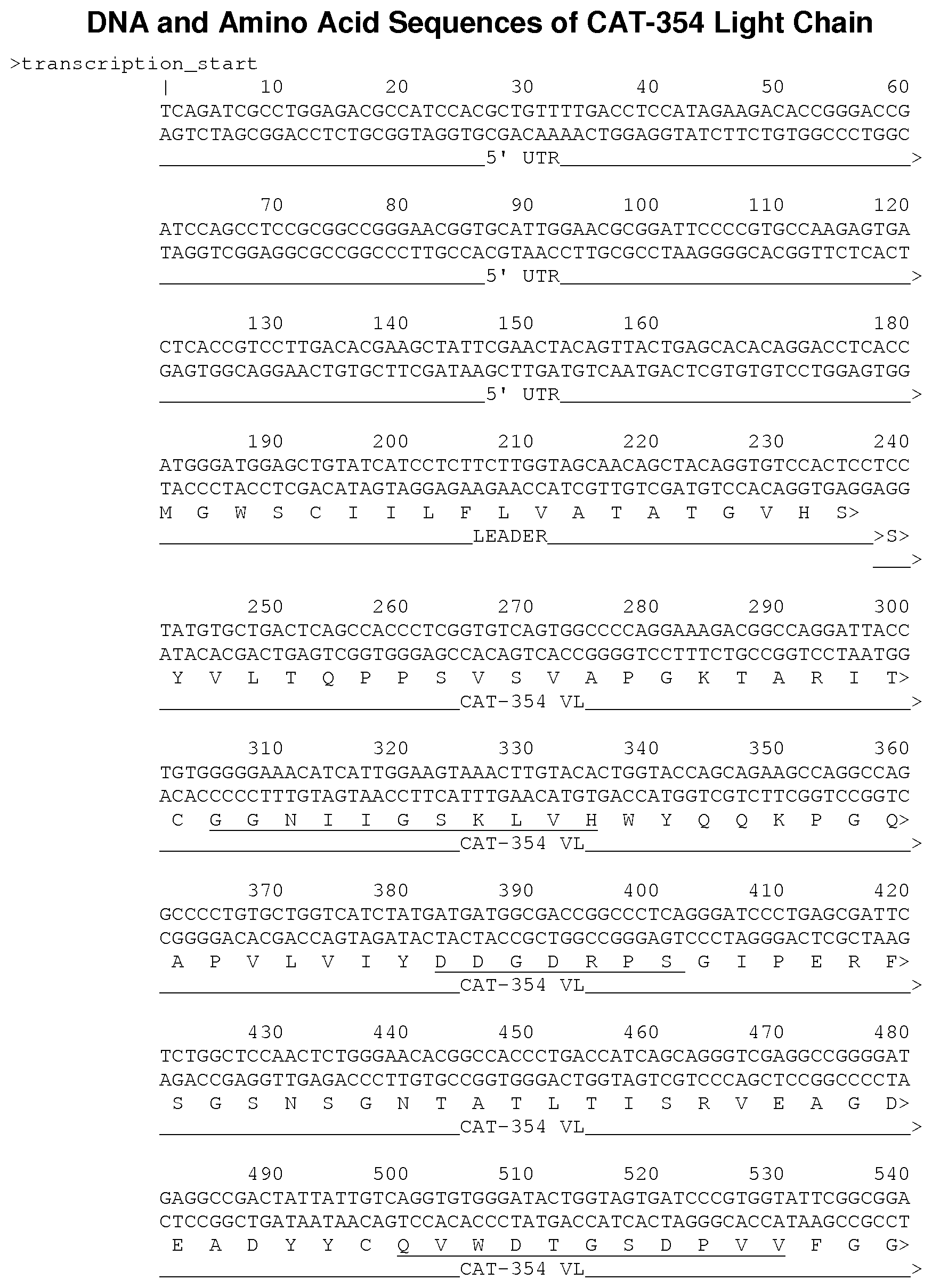
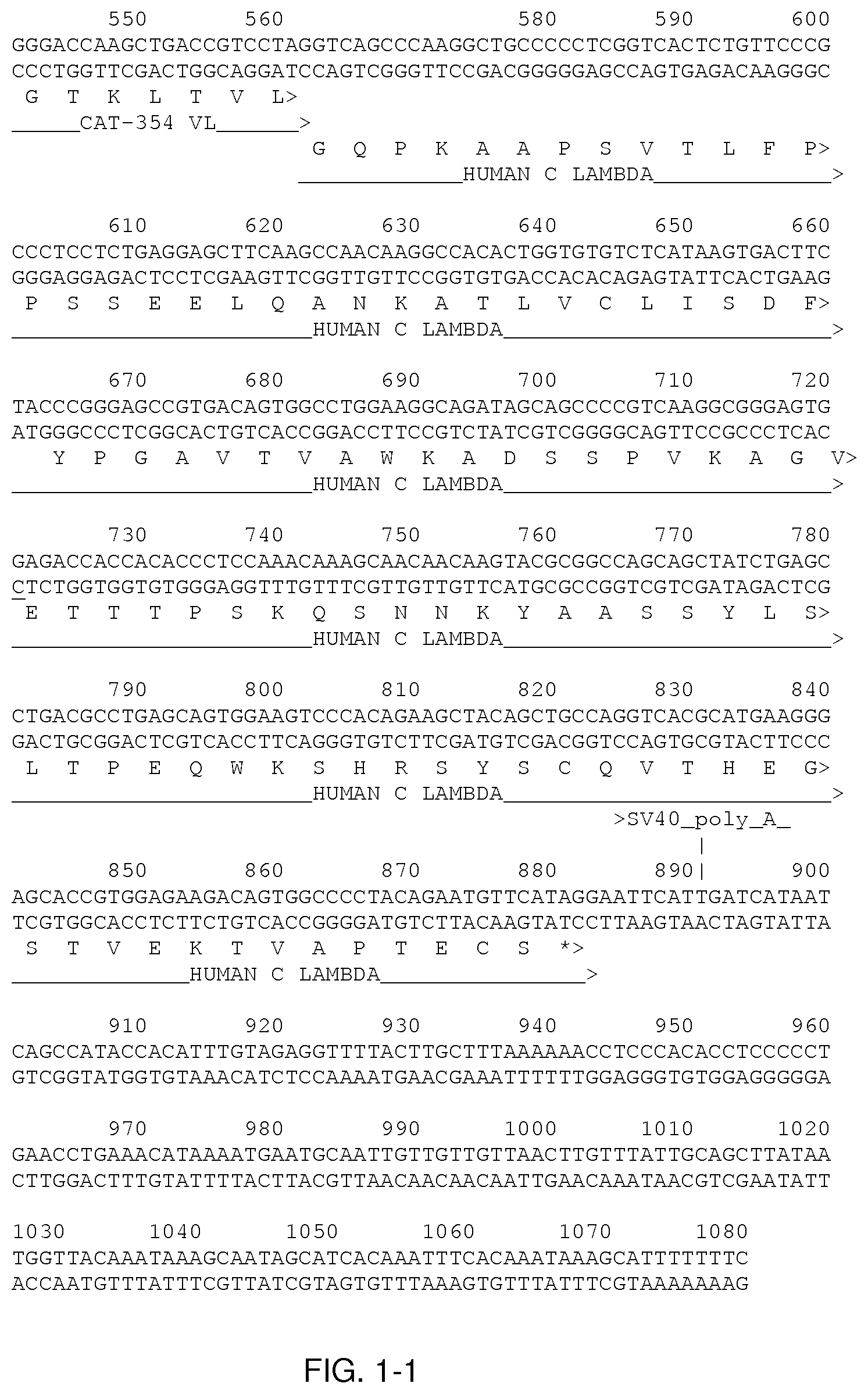
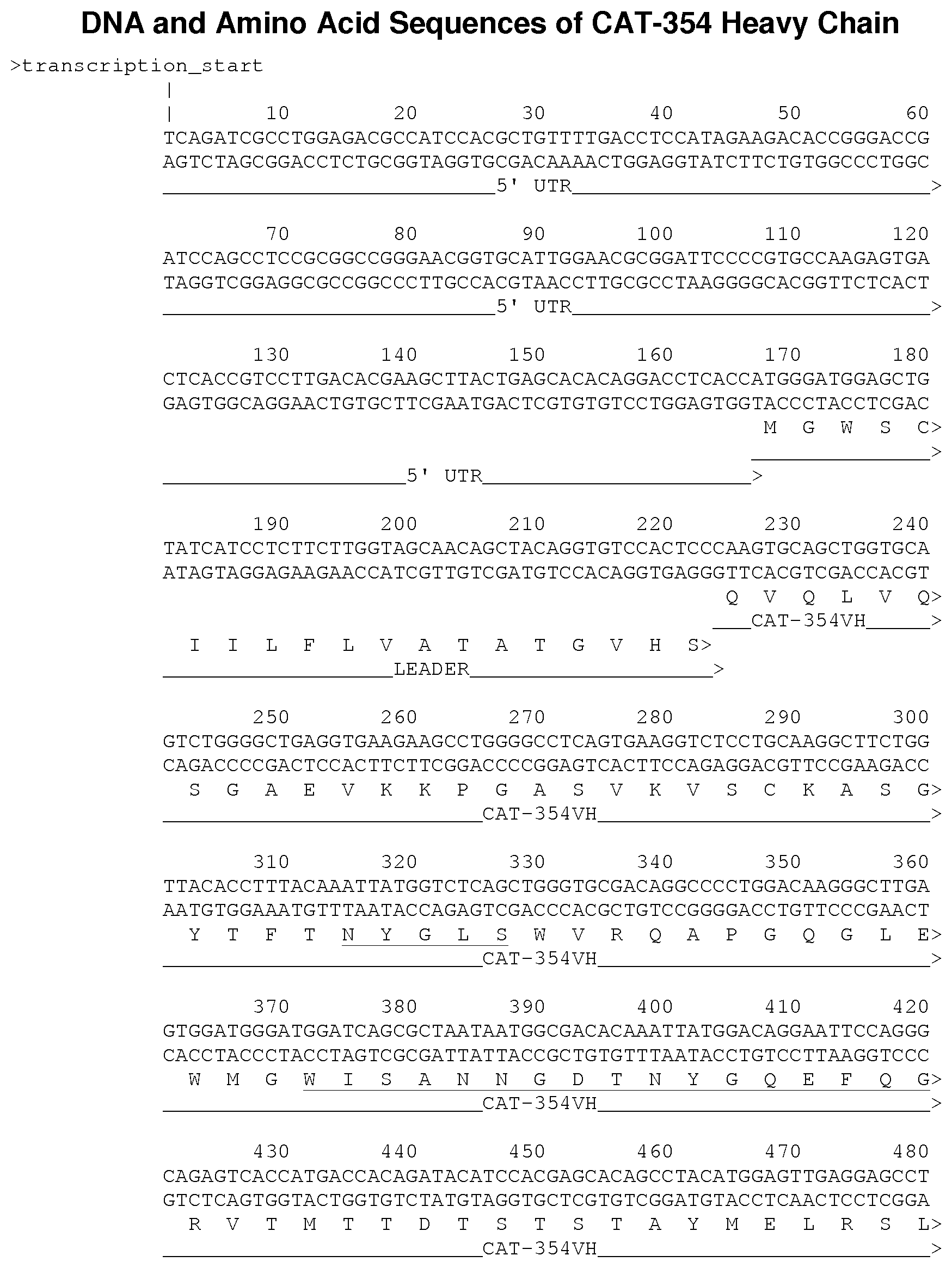
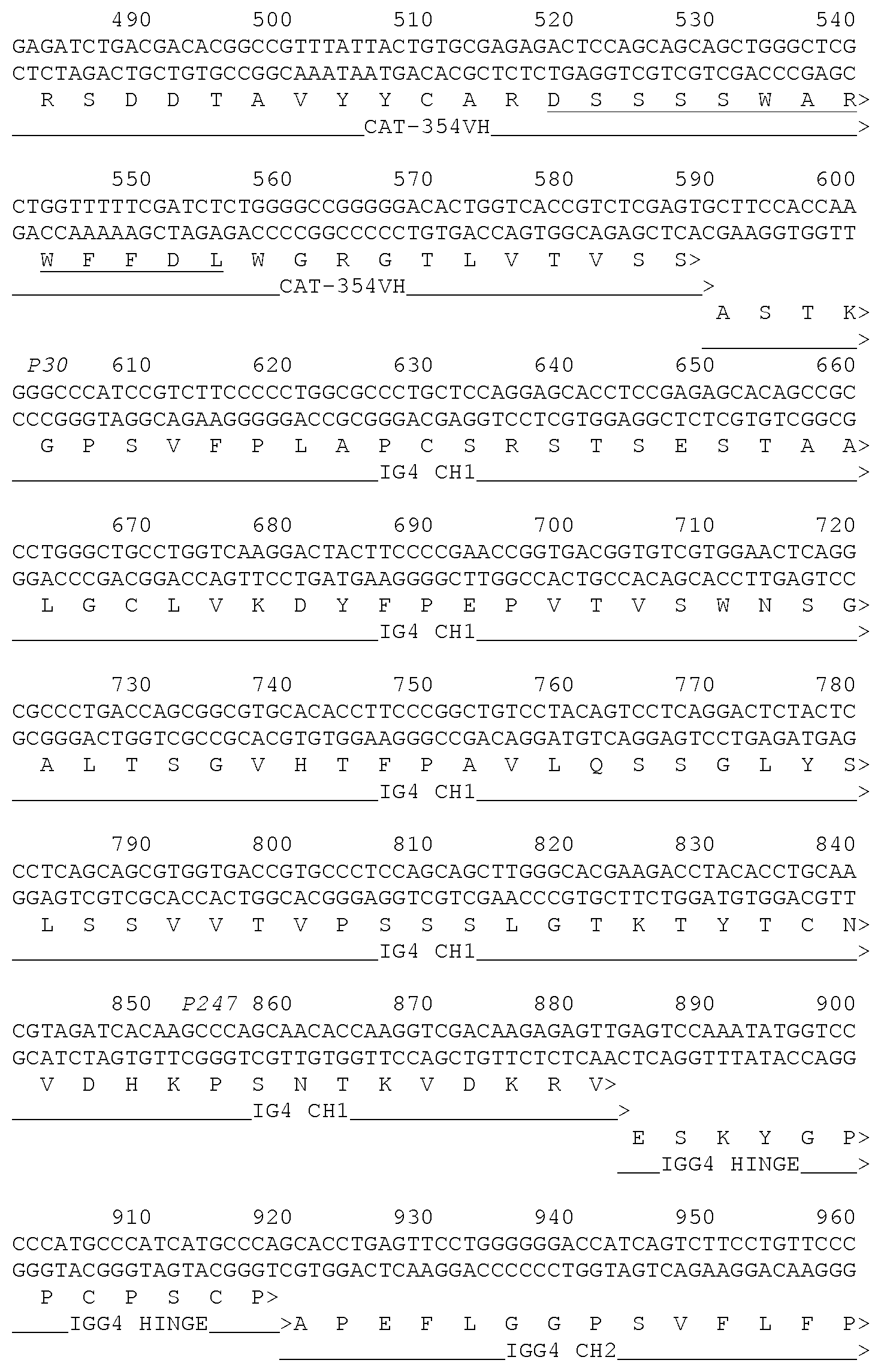
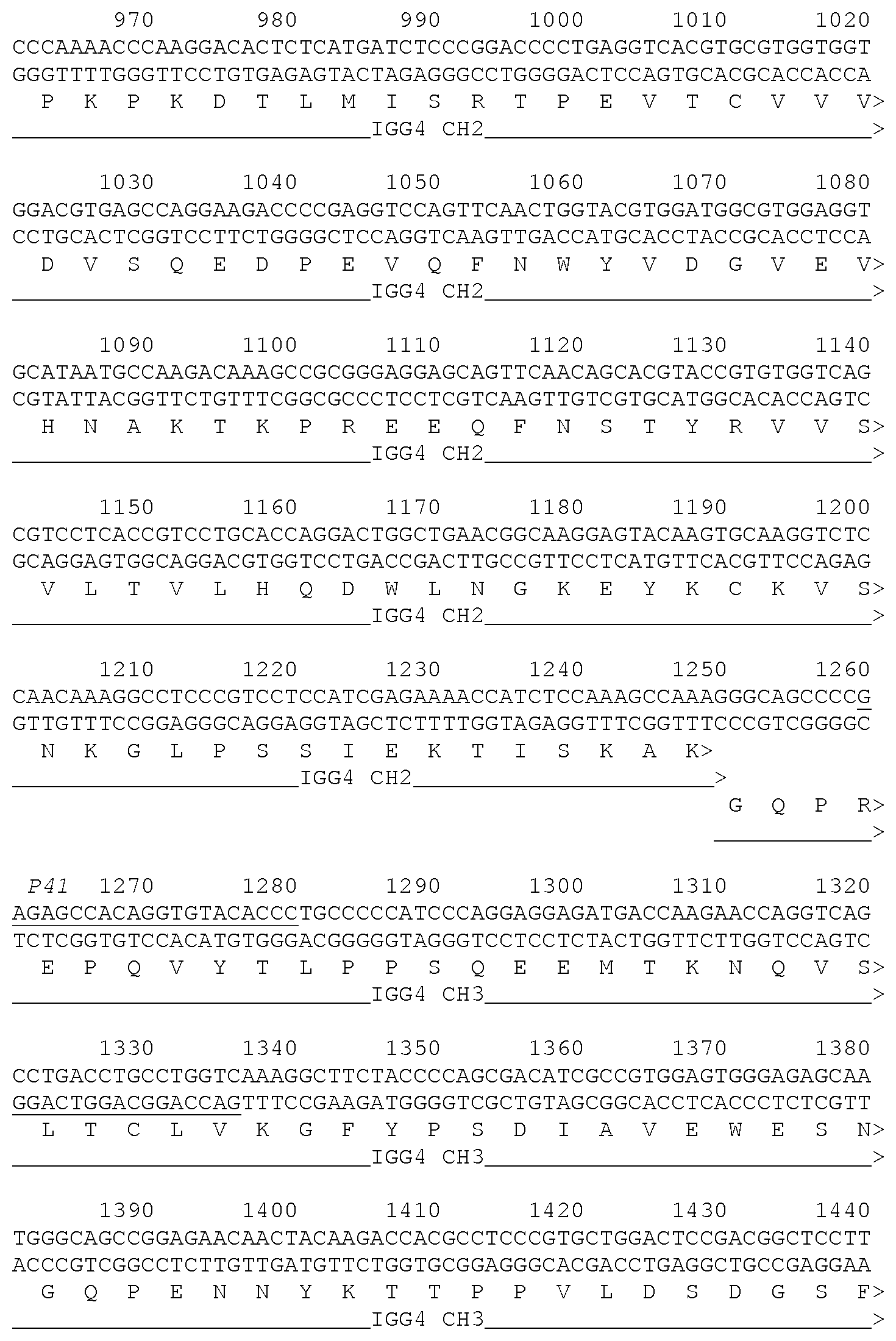

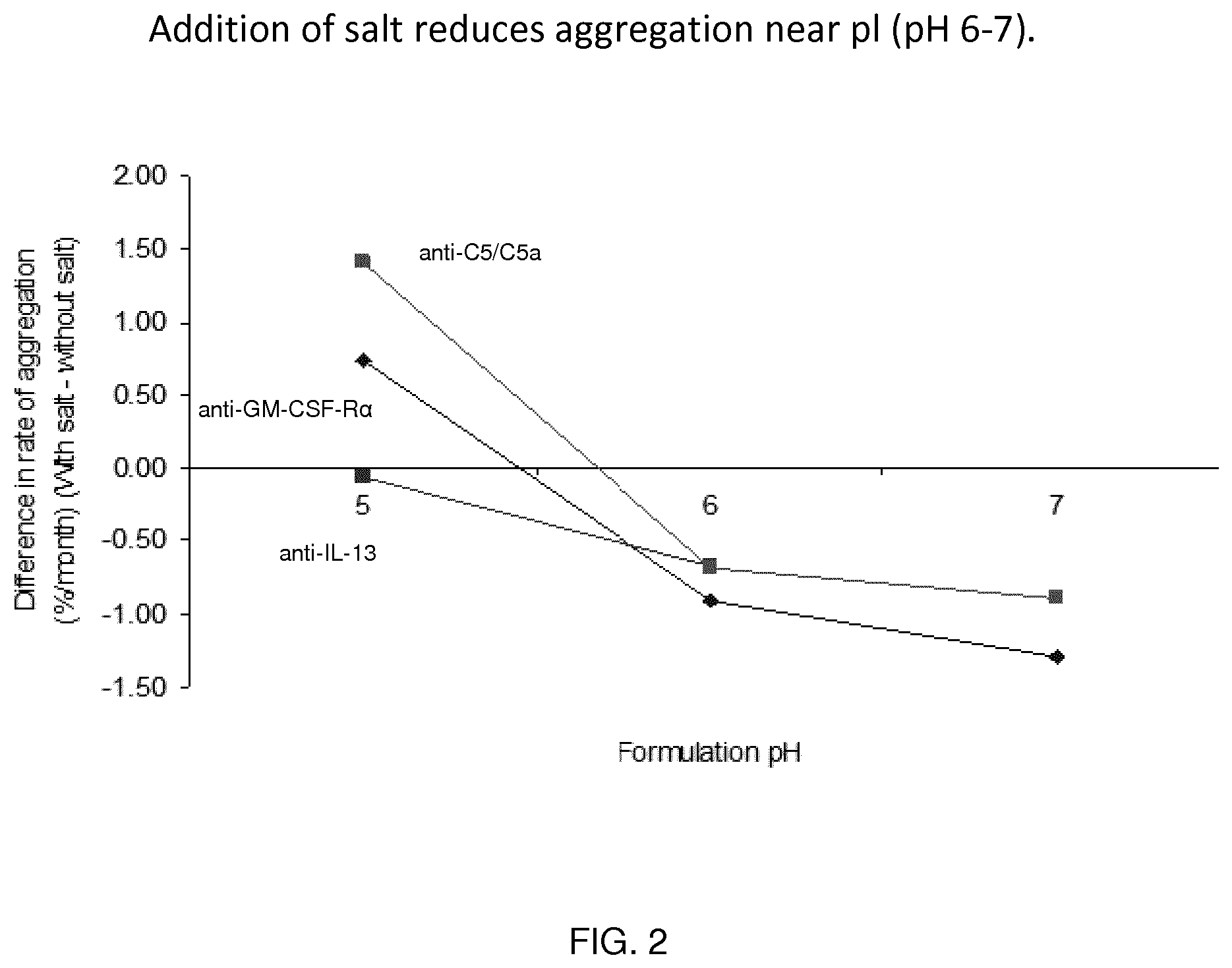

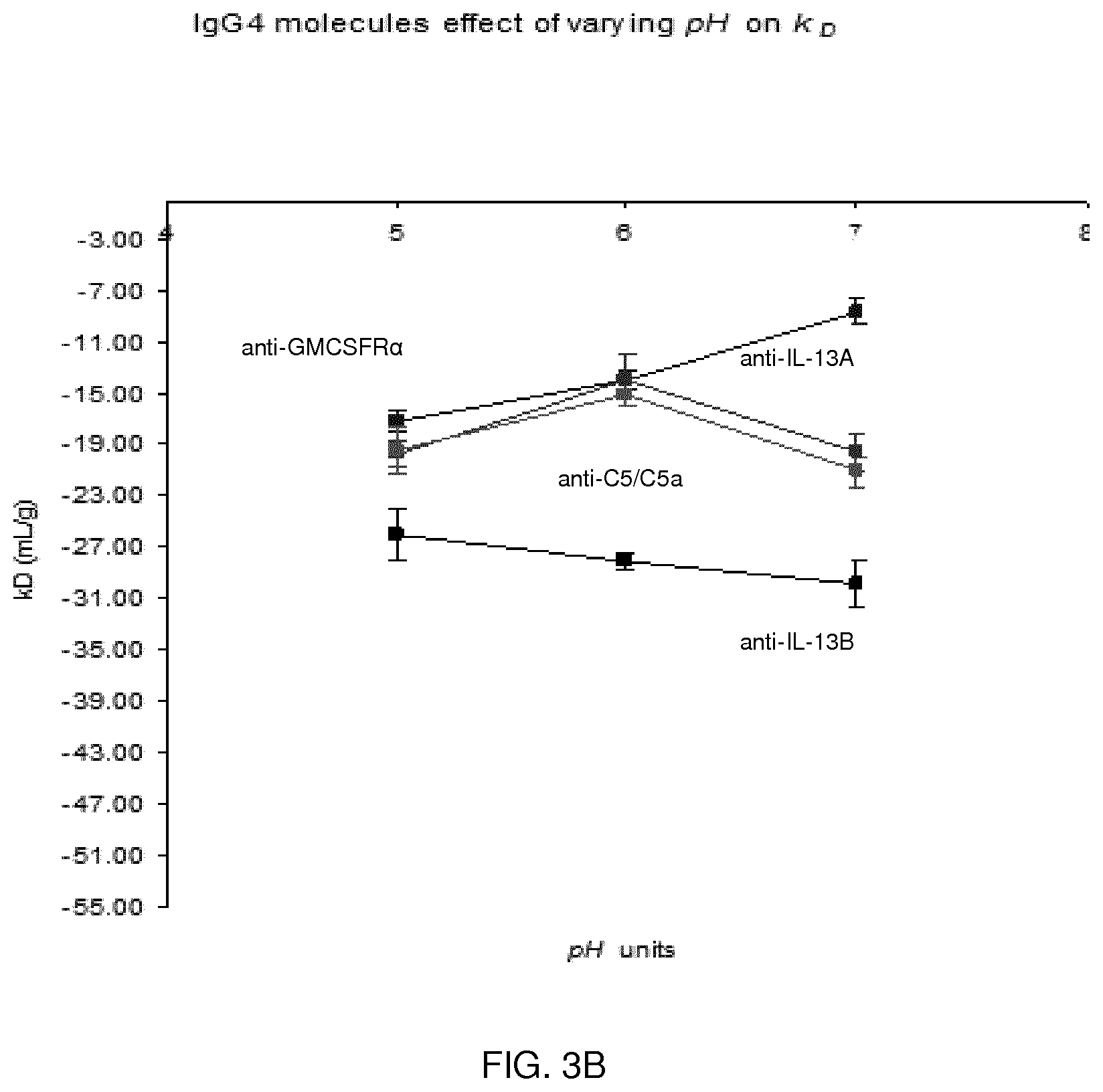
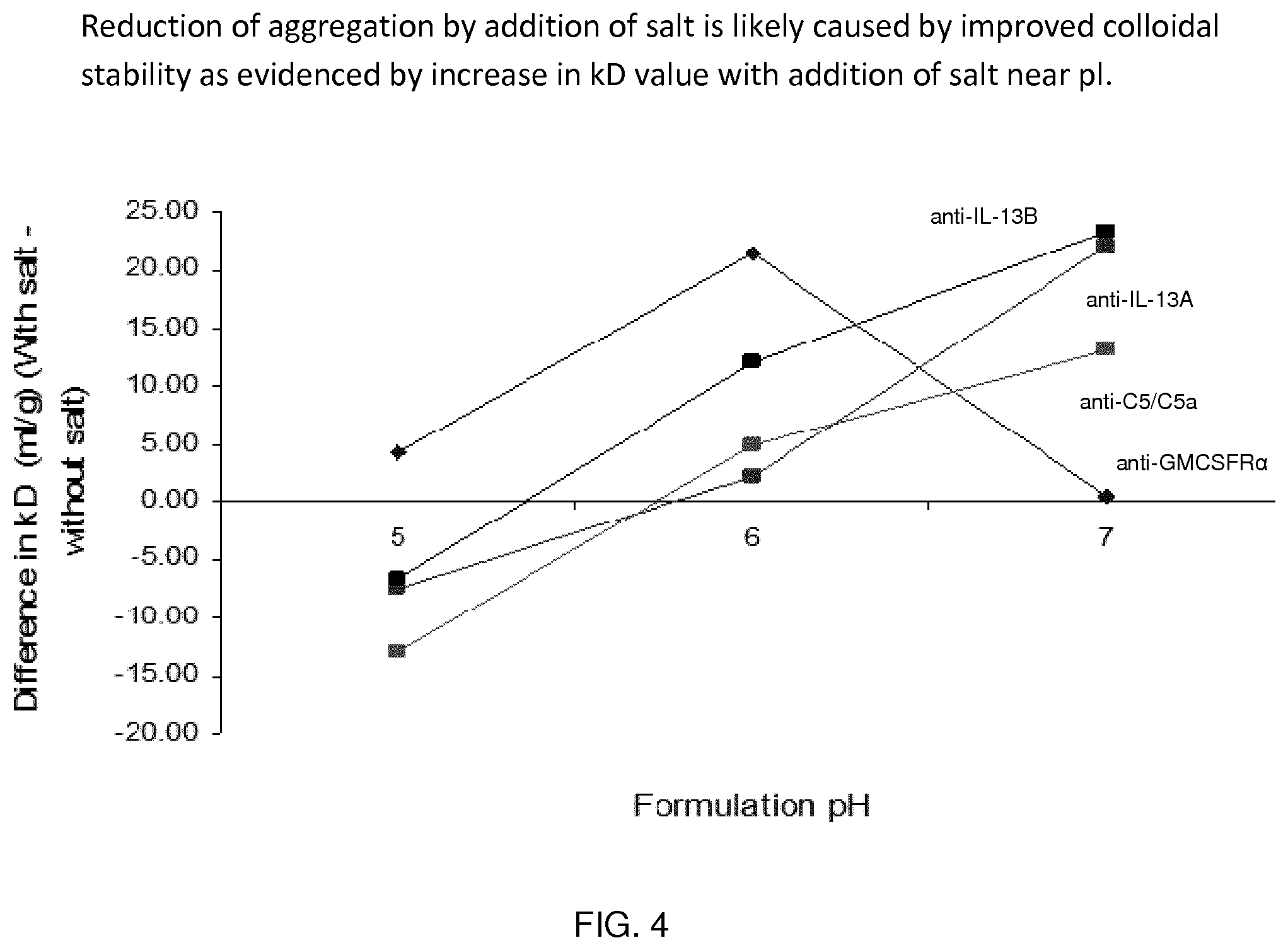
View All Diagrams
| United States Patent Application | 20200283516 |
| Kind Code | A1 |
| LOBO; Brian ; et al. | September 10, 2020 |
FORMULATIONS OF MONOCLONAL ANTIBODIES
Abstract
The present invention provides a formulation comprising: (i) a monoclonal antibody; and (ii) an ionic excipient; wherein the monoclonal antibody is present at a concentration of about 50 mg/ml or greater (e.g. about 50 mg/ml to about 200 mg/ml) and the ionic excipient is present at a concentration of about 50 to about 150 mM and the formulation has a pH of 5.5 to 6.5.
| Inventors: | LOBO; Brian; (Gaithersburg, MD) ; GOLDBERG; Deborah Sweet; (Gaithersburg, MD) ; SHARMA; Monika Sood; (Gaithersburg, MD) ; SHAH; Ambarish Umakant; (Gaithersburg, MD) | ||||||||||
| Applicant: |
|
||||||||||
|---|---|---|---|---|---|---|---|---|---|---|---|
| Assignee: | MEDIMMUNE LIMITED Cambridge GB |
||||||||||
| Family ID: | 1000004913797 | ||||||||||
| Appl. No.: | 16/488302 | ||||||||||
| Filed: | February 28, 2018 | ||||||||||
| PCT Filed: | February 28, 2018 | ||||||||||
| PCT NO: | PCT/EP2018/054960 | ||||||||||
| 371 Date: | August 23, 2019 |
Related U.S. Patent Documents
| Application Number | Filing Date | Patent Number | ||
|---|---|---|---|---|
| 62465269 | Mar 1, 2017 | |||
| Current U.S. Class: | 1/1 |
| Current CPC Class: | C07K 2317/94 20130101; C07K 2317/565 20130101; A61K 9/19 20130101; C07K 16/244 20130101; A61K 47/26 20130101 |
| International Class: | C07K 16/24 20060101 C07K016/24; A61K 47/26 20060101 A61K047/26 |
Claims
1. A formulation comprising: i. a monoclonal antibody; and ii. an ionic excipient; wherein the monoclonal antibody is present at a concentration of about 50 mg/ml or greater and the ionic excipient is present at a concentration of about 50 to about 150 mM and the formulation has a pH of 5.5 to 7.5.
2. A formulation comprising: i. a monoclonal antibody; and ii. an ionic excipient; wherein the monoclonal antibody is present at a concentration of about 50 mg/ml or greater and the ionic excipient is present at a concentration of about 50 to about 150 mM and the formulation has a pH of 5.5 to 7.5; and wherein the aggregation rate of the monoclonal antibody in the formulation is reduced compared to the aggregation rate of the same antibody in the same formulation but without an ionic excipient.
3. A formulation according to claim 1, wherein the monoclonal antibody has a pI in the range of pH 5.5 to pH 7.5.
4. A formulation according to claim 1, wherein the monoclonal antibody has a pI in the range of pH 6.0 to pH 7.5.
5. A formulation according to claim 1, wherein the monoclonal antibody has a pI in the range of pH 6.4 to pH 7.5.
6. A formulation according to claim 1, wherein the monoclonal antibody is an IgG4 monoclonal antibody.
7. A formulation according to claim, wherein the monoclonal antibody is present in the formulation at a concentration of about 100 mg/ml to about 200 mg/ml.
8. A formulation according to claim 7, wherein the monoclonal antibody is present in the formulation at a concentration of about 100 mg/ml.
9. A formulation according to claim 1, wherein the formulation has a pH in the range of about pH 5.5 to about pH 6.5.
10. A formulation according to claim 1, wherein the formulation has a pH in the range of about pH 5.7 to about pH 6.3.
11. A formulation according to claim 1, wherein the formulation has a pH in the range of about pH 5.7 to about pH 6.1.
12. A formulation according to claim 11, wherein the formulation has a pH of about pH 6.0.
13. A formulation according to claim 1, wherein the ionic excipient is a salt.
14. A formulation according to claim 13, wherein the salt is NaCl.
15. A formulation according to claim 13, wherein the salt is arginine hydrochloride.
16. A formulation according to claim 13, wherein the salt is lysine hydrochloride.
17. A formulation according to claim 1, wherein the ionic excipient is present at a concentration of about 75 mM to about 100 mM.
18. A formulation according to claim 17, wherein the ionic excipient is present at a concentration of about 80 mM.
19. A formulation according to claim 1, wherein the formulation further comprises a sugar.
20. A formulation according to claim 19, wherein the sugar is trehalose.
21. A formulation according to claim 19, wherein the sugar is sucrose.
22. A formulation according to claim 19, wherein the sugar is present at a concentration of about 100 mM to about 140 mM.
23. A formulation according to claim 22, wherein the sugar is present at a concentration of about 120 mM.
24. A formulation according to claim 1, wherein the formulation further comprises one or more buffers.
25. A formulation according to claim 24, wherein the one or more buffers is selected from histidine, histidine hydrochloride, and histidine/histidine hydrochloride.
26. A formulation according to claim 25, wherein the one or more buffers is L-histidine/L-histidine hydrochloride monohydrate.
27. A formulation according to claim 24, wherein the one or more buffers is present at a concentration of about 10 mM to about 50 mM.
28. A formulation according to claim 27, wherein the one or more buffers is present at a concentration of about 30 mM.
29. A formulation according to claim 1, wherein the formulation further comprises a surfactant.
30. A formulation according to claim 29, wherein the surfactant is a polysorbate.
31. A formulation according to claim 30, wherein the surfactant is polysorbate-80.
32. A formulation according to claim 29, wherein the surfactant is present in the formulation at a concentration from about 0.02% (w/v) to about 0.07% (w/v).
33. A formulation according to claim 32, wherein the surfactant is present in the formulation at a concentration of about 0.04% (w/v).
34. A formulation according to claim 1, wherein the formulation further comprises one or more additional excipients, including for example, one or more sugars, salts, amino acids, polyols, chelating agents, emulsifiers and/or preservatives.
35. A formulation according to claim 1 comprising 150 mg/ml anti-IL-13 antibody, 50 mM Sodium Acetate, 85 mM sodium chloride and 0.01% Polysorbate 80, wherein the formulation has a pH of pH 5.5.
36. A formulation according to claim 35, wherein the antibody has the 6 CDR sequences of CAT-354 as shown in FIG. 1-1 and FIG. 1-2.
37. A formulation according to claim 35, wherein the antibody has the VH and VL sequences of CAT-354 as shown in FIG. 1-1 and FIG. 1-2.
38. (canceled)
39. (canceled)
40. (canceled)
41. A formulation according to claim 1, which is a pharmaceutical formulation.
42. (canceled)
43. (canceled)
44. (canceled)
45. A lyophilized cake capable of being reconstituted using only sterile water into a formulation as defined claim claim 1 or a pharmaceutical formulation as defined in claim 41.
46. A formulation capable of being lyophilized to form a lyophilized cake, wherein the lyophilized cake is capable of being reconstituted using only sterile water into a formulation as defined claim 1 or a pharmaceutical formulation as defined in claim 41.
Description
FIELD OF THE INVENTION
[0001] The invention is concerned with an antibody formulation, in particular, a monoclonal antibody formulation and uses thereof. The invention is particularly concerned with providing improved colloidal stability in an antibody formulation.
BACKGROUND OF THE INVENTION
[0002] As a result of the isoelectric point (pI) of a number of monoclonal antibodies being in the preferred pharmaceutical pH formulation range for proteins (pH 5.5 to pH 7.5), these molecules present unique formulation challenges.
[0003] Colloidal instability at a molecule's pI is due to a lack of an electrostatic charge on the molecule, which allows closer protein-protein interactions (so-called "self-association") that lead to physical instabilities. For this reason, the pH of a protein formulation is typically selected to be at least 1 pH unit away from the protein pI. This aims to provide colloidal stability and thus prevent physical instabilities, such as aggregation, precipitation, opalescence, phase separation and/or particle formation.
[0004] According to the `1 pH unit away` rule, antibodies having a low or neutral pI e.g. a pI of pH 5.5 to pH 7.5 thus should be formulated into a formulation with a pH outside the range of 5.5 to 7.5. However, outside this range, additional instabilities can be observed. At more acidic pH, an increased rate of fragmentation, reduced conformational stability and increased aggregation can be observed. At more basic pH, the potential for increased oxidation, deamidation and fragmentation and incompatibility with glass containers are present.
[0005] The above instabilities are particularly problematic in such antibody formulations where the antibody is present at a commercially desirable concentration e.g. 50 mg/ml and above.
[0006] Therefore, there exists a need to provide an improved formulation for an antibody having a low or neutral pI. In particular, there exists a need to provide a stable formulation for an antibody having a low or neutral pI and, particularly such a formulation having a commercially desirable antibody concentration.
BRIEF SUMMARY OF THE INVENTION
[0007] The present invention provides a new antibody formulation, in particular a new monoclonal antibody formulation. In particular, the present formulation provides a means for improving colloidal stability for antibodies having a low or neutral pI. The present invention thus provides an alternative to the `1 pH away` rule for providing colloidal stability. The present invention thus allows antibodies having a low or neutral pI to be formulated within 1 pH unit of the antibody pI. Thus, the present invention enables such antibodies to be formulated within a pH range of 5.5 to 7.5 and at a commercially useful concentration, whilst substantially avoiding the instabilities associated with more acidic or more basic pHs.
[0008] The invention provides a formulation comprising: [0009] i. a monoclonal antibody; and [0010] ii. an ionic excipient; wherein the monoclonal antibody is present at a concentration of about 50 mg/ml or greater (e.g. about 50 mg/ml to about 200 mg/ml) and the ionic excipient is present at a concentration of about 50 to about 150 mM and the formulation has a pH of 5.5 to 7.5.
[0011] The invention thus further provides a formulation comprising: [0012] i. a monoclonal antibody; and [0013] ii. an ionic excipient; wherein the monoclonal antibody is present at a concentration of about 50 mg/ml or greater (e.g. about 50 mg/ml to about 200 mg/ml) and the ionic excipient is present at a concentration of about 50 to about 150 mM and the formulation has a pH of 5.5 to 7.5; and wherein the aggregation rate of the monoclonal antibody in the formulation is reduced compared to the aggregation rate of the same antibody in the same formulation but without an ionic excipient.
[0014] The formulations of the present invention are particularly useful for antibodies having a low or neutral pI, for example in the range of pH 5.5 to pH 7.5. The invention provides a formulation comprising: [0015] i. a monoclonal antibody having a low or neutral pI (e.g. 5.5 to 7.5); and [0016] ii. an ionic excipient; wherein the monoclonal antibody is present at a concentration of about 50 mg/ml or greater (e.g. about 50 mg/ml to about 200 mg/ml) and the ionic excipient is present at a concentration of about 50 to about 150 mM and the formulation has a pH of 5.5 to 7.5.
[0017] The invention thus further provides a formulation comprising: [0018] i. a monoclonal antibody having a low or neutral pI (e.g. 5.5 to 7.5); and [0019] ii. an ionic excipient; wherein the monoclonal antibody is present at a concentration of about 50 mg/ml or greater (e.g. about 50 mg/ml to about 200 mg/ml) and the ionic excipient is present at a concentration of about 50 to about 150 mM and the formulation has a pH of 5.5 to 7.5; and wherein the aggregation rate of the monoclonal antibody in the formulation is reduced compared to the aggregation rate of the same antibody formulated in the same formulation but without an ionic excipient.
[0020] In one embodiment, the monoclonal antibody has a pI in the range of 5.5 to 7.5. In one embodiment, the monoclonal antibody has a pI in the range of 6.0 to 7.5. In one embodiment, the monoclonal antibody has a pI in the range of 6.3 to 7.5. In one embodiment, the monoclonal antibody has a pI in the range of 6.4 to 7.5. Without wishing to be bound by theory, a low to neutral pI can occur for proteins where there is a either a net balance of oppositely charged (positive amine groups and negative carboxylate groups) amino acid side chains on the protein or different domains have overall opposite charge, within a pH range of 5.5 to 7.5. Again, without wishing to be bound by theory, it is possible that the ionic excipient in the formulation of the invention shields these opposing and attractive charges, thus colloidally stabilizing proteins having a pI within this range. The present invention thus provides use of an ionic excipient in an antibody formulation for the purpose of changing the charge state or distribution of the antibody in the formulation. The present invention further provides use of an ionic excipient in an antibody formulation for the purpose of colloidally stabilizing the antibody in the formulation.
[0021] In one embodiment, the monoclonal antibody is present in the formulations described herein at a concentration of about 75 mg/ml or greater (e.g. about 75 mg/ml to about 200 mg/ml). In one embodiment, the monoclonal antibody is present in the formulations described herein at a concentration of about 100 mg/ml or greater (e.g. about 100 mg/ml to about 200 mg/ml). In one embodiment, the monoclonal antibody is present in the formulations described herein at a concentration of about 100 mg/ml to about 165 mg/ml. In one embodiment, the monoclonal antibody is present at a concentration of about 100 mg/ml.
[0022] In one embodiment, the ionic excipient is present at a concentration of about 75 mM to about 100 mM. In one embodiment, the ionic excipient is present at a concentration of about 75 mM. In one embodiment, the ionic excipient is present at a concentration of about 80 mM.
[0023] In one embodiment, the monoclonal antibody is an IgG1 or IgG4 monoclonal antibody. Most preferably, the monoclonal antibody is an IgG4 monoclonal antibody. IgG4 antibodies typically have a low or neutral pI. The invention thus provides a formulation comprising: [0024] i. an IgG4 monoclonal antibody; and [0025] ii. an ionic excipient; wherein the monoclonal antibody is present at a concentration of about 50 mg/ml or greater (e.g. about 50 mg/ml to about 200 mg/ml) and the ionic excipient is present at a concentration of about 50 to about 150 mM and the formulation has a pH of 5.5 to 7.5.
[0026] The invention thus further provides a formulation comprising: [0027] i. an IgG4 monoclonal antibody; and [0028] ii. an ionic excipient; wherein the monoclonal antibody is present at a concentration of about 50 mg/ml or greater (e.g. about 50 mg/ml to about 200 mg/ml) and the ionic excipient is present at a concentration of about 50 to about 150 mM and the formulation has a pH of 5.5 to 7.5; and wherein the aggregation rate of the monoclonal antibody in the formulation is reduced compared to the aggregation rate of the same antibody in the same formulation but without an ionic excipient.
[0029] In one embodiment, the formulations described herein have a pH in the range of about pH 5.5 to about pH 6.5. In one embodiment, the formulations described herein have a pH in the range of about pH 5.7 to about pH 6.3. In one embodiment, the formulations described herein have a pH in the range of about pH 5.7 to about pH 6.1. Preferred formulations have a pH of about 5.8. Other preferred formulations have a pH of about 6.0.
[0030] In one embodiment, the ionic excipient is a charged amino acid. In one embodiment, the ionic excipient is lysine. In another embodiment, the ionic excipient is arginine.
[0031] In one embodiment, the ionic excipient is a salt. The invention thus provides a formulation comprising: [0032] i. a monoclonal antibody as defined anywhere herein; and [0033] ii. a salt; wherein the monoclonal antibody is present at a concentration of about 50 mg/ml or greater (e.g. about 50 mg/ml to about 200 mg/ml) and the salt is present at a concentration of about 50 to about 150 mM and the formulation has a pH of 5.5 to 7.5.
[0034] The invention thus further provides a formulation comprising: [0035] i. a monoclonal antibody as defined anywhere herein; and [0036] ii. a salt; wherein the monoclonal antibody is present at a concentration of about 50 mg/ml or greater (e.g. about 50 mg/ml to about 200 mg/ml) and the salt is present at a concentration of about 50 to about 150 mM and the formulation has a pH of 5.5 to 7.5; and wherein the aggregation rate of the monoclonal antibody in the formulation is reduced compared to the aggregation rate of the same antibody in the same formulation but without a salt.
[0037] In one embodiment, the salt is present at a concentration of about 75 mM to about 100 mM. In one embodiment, the salt is present at a concentration of about 75 mM or about 80 mM.
[0038] In one embodiment, the salt is NaCl, for example at a concentration of about 75 mM to about 100 mM, suitably at a concentration of about 75 mM.
[0039] In one embodiment, the salt is arginine hydrochloride, for example at a concentration of about 75 mM to about 100 mM, suitably at a concentration of about 80 mM.
[0040] In one embodiment, the formulation further comprises a sugar. Amongst other known benefits, the presence of a sugar can improve tonicity of the formulation. This is desirable since preferred formulations are isotonic or near isotonic (for example, having an osmolality between 240 to 500 mOsm/kg. In one embodiment, the ionic excipient is a salt and the formulation further comprises a sugar.
[0041] In one embodiment, the formulation further comprises a sugar and the ionic excipient is present at a concentration in the range of about 75 mM to about 150 mM. In one embodiment, the formulation further comprises a sugar and the ionic excipient is present at a concentration in the range of about 75 mM to about 100 mM. In one embodiment, the formulation further comprises a sugar, which is present at a concentration in the range of about 100 mM to 140 mM, and the ionic excipient is present at a concentration in the range of about 75 mM to 100 mM.
[0042] The invention thus provides a formulation comprising: [0043] i. a monoclonal antibody as defined anywhere herein; [0044] ii. an ionic excipient (e.g. a salt) as defined anywhere herein; [0045] iii. a sugar as defined anywhere herein; and wherein the monoclonal antibody is present at a concentration of about 50 mg/ml or greater (e.g. about 50 mg/ml to about 200 mg/ml) and the ionic excipient is present at a concentration of about 50 to about 150 mM and the formulation has a pH of 5.5 to 7.5. The ionic excipient preferably is present at a concentration in the range of about 75 mM to about 150 mM, more preferably about 75 mM to about 100 mM.
[0046] The invention thus further provides a formulation comprising: [0047] i. a monoclonal antibody as defined anywhere herein; and [0048] ii. an ionic excipient (e.g. a salt) as defined anywhere herein; [0049] iii. a sugar as defined anywhere herein; and wherein the monoclonal antibody is present at a concentration of about 50 mg/ml or greater (e.g. about 50 mg/ml to about 200 mg/ml) and the ionic excipient is present at a concentration of about 50 of about 150 mM and the formulation has a pH of 5.5 to 7.5; and wherein the aggregation rate of the monoclonal antibody in the formulation is reduced compared to the aggregation rate of the same antibody in the same formulation but without an ionic excipient. The ionic excipient preferably is present at a concentration in the range of about 75 mM to about 150 mM, more preferably about 75 mM to about 100 mM.
[0050] In one embodiment, the sugar is trehalose. In another embodiment, the sugar is sucrose. For example, the sugar is found at a concentration of about 100 mM to about 140 mM, suitably at a concentration of about 120 mM.
[0051] In one embodiment, the formulation further comprises one or more buffers. In one embodiment, the one or more buffers is a buffer comprising histidine. In one embodiment, the one or more buffers are selected from a buffer comprising histidine succinate, histidine acetate, histidine citrate, histidine chloride or histidine sulfate. In one embodiment, the one or more buffers is histidine, histidine hydrochloride, or a combination thereof (histidine/histidine hydrochloride). In one embodiment, the one or more buffers is L-histidine/L-histidine hydrochloride monohydrate. For example, the buffer may be at a concentration of about 10 mM to about 50 mM, suitably at a concentration of about 30 mM. It will be understood that a buffer may, itself, be an ionic excipient. Thus, in one embodiment, the buffer is the ionic excipient. In this embodiment, the concentration of the buffer should be above 50 mM i.e. in line with the concentration of the ionic excipient disclosed herein. Put another way, in one embodiment, the ionic excipient also acts as a buffer in the formulation. In this embodiment, an additional buffer may or may not be present.
[0052] In one embodiment, the formulation further comprises a surfactant. In one embodiment, the surfactant is a polysorbate, including for example, polysorbate-80.
[0053] In one embodiment, the formulation further comprises a sugar and one or more buffers. In one embodiment, the ionic excipient is a salt and the formulation further comprises a sugar and one or more buffers.
[0054] In one embodiment, the formulation further comprises a surfactant, a sugar and one or more buffers. In one embodiment, the ionic excipient is a salt and the formulation further comprises a surfactant, a sugar and one or more buffers.
[0055] The invention thus provides a formulation comprising: [0056] i. a monoclonal antibody as defined anywhere herein; [0057] ii. an ionic excipient (e.g. a salt) as defined anywhere herein; [0058] iii. a sugar as defined anywhere herein; [0059] iv. one or more buffers as defined anywhere herein; and [0060] v. optionally a surfactant as defined anywhere herein wherein the monoclonal antibody is present at a concentration of about 50 mg/ml or greater (e.g. about 50 mg/ml to about 200 mg/ml) and the ionic excipient is present at a concentration of about 50 to about 150 mM and the formulation has a pH of 5.5 to 7.5.
[0061] The invention thus further provides a formulation comprising: [0062] i. a monoclonal antibody as defined anywhere herein; and [0063] ii. an ionic excipient (e.g. a salt) as defined anywhere herein; [0064] iii. a sugar as defined anywhere herein; [0065] iv. one or more buffers as defined anywhere herein; and [0066] v. optionally a surfactant as defined anywhere herein wherein the monoclonal antibody is present at a concentration of about 50 mg/ml or greater (e.g. about 50 mg/ml to about 200 mg/ml) and the ionic excipient is present at a concentration of about 50 to about 150 mM and the formulation has a pH of 5.5 to 7.5; and wherein the aggregation rate of the monoclonal antibody in the formulation is reduced compared to the aggregation rate of the same antibody in the same formulation but without an ionic excipient.
[0067] The formulations described herein can also include one or more additional excipients, including for example, one or more sugars, salts, amino acids, polyols, chelating agents, emulsifiers and/or preservatives.
[0068] One preferred formulation provided by the invention comprises 150 mg/ml antibody, 50 mM sodium acetate/acetic acid, 106 mM trehalose dehydrate, 70 mM sodium chloride, 0.05% (w/v) Polysorbate 80, wherein the formulation has a pH of pH 5.8. The antibody in this formulation is preferably an anti-GM-CSF-Ra IgG4 antibody, more preferably an anti-GM-CSF-Ra IgG4 antibody having the VH and VL sequences of the CAM-3001 antibody as described herein. The antibody in this formulation is preferably an anti-GM-CSF-Ra IgG4 antibody having the same 6 CDRs as the CAM-3001 antibody as described herein.
[0069] One preferred formulation provided by the invention comprises 150 mg/ml antibody, 50 mM Sodium Acetate, 85 mM sodium chloride and 0.01% Polysorbate 80, wherein the formulation has a pH of pH 5.5. The antibody in this formulation is preferably an anti-IL-13 IgG4 antibody, more preferably an anti-IL-13 IgG4 antibody having the VH and VL sequences of the CAT-354 antibody as described herein. The antibody in this formulation is preferably an anti-IL-13 IgG4 antibody having the same 6 CDRs as the CAT-354 antibody as described herein.
[0070] The formulations of the invention preferably are pharmaceutical formulations.
[0071] The present invention provides a pharmaceutical formulation as described anywhere herein for use as a medicament.
[0072] The present invention provides a pharmaceutical formulation as described anywhere herein for use in the treatment of a disease.
[0073] The present invention provides a method of treating a disease in a subject comprising administering a pharmaceutical formulation as described anywhere herein to the subject. Also provided herein are methods of treating a subject by administering a therapeutically effective amount of a pharmaceutical formulation as described anywhere herein to the subject.
[0074] In one embodiment, the subject is a human.
[0075] The disease to be treated will be dependent on the particular antibody contained in the formulation. In one embodiment, the disease is cancer. The disease may be selected from the group consisting of diabetes, cardiovascular diseases, infectious disease, rheumatoid arthritis, vasculitis, giant cell arthritis, glomerular nephropathy, lupus nephritis, uveitis, atopic dermatitis, cirrhosis, psoriatic arthritis, chronic obstructive pulmonary disease, severe asthma, neutrophilic asthma, and myeloid leukemia.
[0076] The present invention provides a lyophilized cake capable of being reconstituted using only sterile water into a formulation as defined herein or a pharmaceutical formulation as defined herein. Also provided herein is a formulation capable of being lyophilised to form a lyophilized cake, wherein the lyophilized cake is capable of being reconstituted using only sterile water into a formulation as defined herein or a pharmaceutical formulation as defined herein.
BRIEF DESCRIPTIONS OF THE DRAWINGS
[0077] FIG. 1 shows the conversion of an IgG4 monoclonal antibody to a half molecule.
[0078] FIG. 1-1 and FIG. 1-2 show sequences relating to the CAT-354 antibody. The V.sub.H and V.sub.L sequences are labelled and the 6 CDRs are underlined.
[0079] FIG. 2 shows the effect of salt on the aggregation rate of IgG4 molecules.
[0080] FIG. 3A shows the results of varying pH on k.sub.D.
[0081] FIG. 3B shows the results of varying pH on Kd in the presence of 100 mM salt.
[0082] FIG. 4 shows the effect of salt on k.sub.D. Note generally a reduction in colloidal stability at pH 5, but an increase in colloidal stability at pH 6 and pH 7.
[0083] FIG. 5 shows aggregation rate data at 40.degree. C. for formulations with or without 100 mM salt.
[0084] FIG. 6 shows change in aggregation rate with formulation pH for MEDI7814.
[0085] FIG. 7 shows the impact of ionic excipients on antibody aggregation rate at pH6 (MEDI7814).
[0086] FIG. 8 shows the MEDI8897 heavy chain nucleotide sequence and translation. CDRs are underlined, amino acid differences form allelic constant regions have been circled and division between the variable and constant regions marked by a ``).
[0087] FIG. 9 shows the MEDI8897 light chain nucleotide sequence and translation. CDRs are underlined and division between the variable and constant regions marked by a ``).
[0088] FIG. 10 shows MEDI8897 formulation stability over 3 month period at 5.degree. C., 25.degree. C. and 40.degree. C.
[0089] FIG. 11 shows the impact of ionic excipients on antibody aggregation rate at pH 6 (MEDI578).
[0090] FIG. 12 shows purity by size-exclusion chromatography.
[0091] FIG. 13 shows a reduction in subvisible particles in formulations containing ionic excipients under thermal stress conditions. Colloidal stability is improved.
DETAILED DESCRIPTION OF THE INVENTION
[0092] Due to the fact that a number of monoclonal antibodies, and in particular IgG4 antibodies, possess a pI that is close to physiologic pH, i.e. the pH generally desired for human administration, difficulties in formulating these monoclonal antibodies occur. These difficulties can relate particularly to colloidal stability.
[0093] IgG4 monoclonal antibodies are characterized by a structure which prevents complement activation, and also allows for an in vivo half molecular exchange (one heavy and one light chain) between two IgG4 molecules, generating a new IgG4 with a bivalent reactivity. See FIG. 1. The IgG4 hinge is three amino acids shorter than the hinge of IgG1, and IgG4 has two cysteines that are available for the covalent interaction between the H-chains. [Aalberse and Schuurman, "IgG4 breaking the rules," Immunology 2002 105:9-19].
[0094] The present invention provides a new monoclonal antibody formulation, in particular a new IgG4 monoclonal antibody formulation and a new IgG1 monoclonal antibody formulation.
[0095] The invention provides a formulation comprising: (i) a monoclonal antibody; and (ii) an ionic excipient (e.g. a salt); wherein the monoclonal antibody is present at a concentration of about 50 mg/ml or greater (e.g. about 50 mg/ml to about 200 mg/ml) and the ionic excipient is present at a concentration of about 50 to about 150 mM and the formulation has a pH of 5.5 to 7.5.
[0096] The invention further provides a formulation comprising: (i) a monoclonal antibody; and (ii) an ionic excipient (e.g. a salt); wherein the monoclonal antibody is present at a concentration of about 50 mg/ml or greater (e.g. about 50 mg/ml to about 200 mg/ml) and the ionic excipient is present at a concentration of about 50 to about 150 mM and the formulation has a pH of 5.5 to 7.5; and wherein the aggregation rate of the monoclonal antibody in the formulation is reduced compared to the aggregation rate of the same antibody in the same formulation but without an ionic excipient.
[0097] Aggregation rate can be measured according to standard techniques as described herein. Surprisingly, formulations in accordance with the present invention have been shown to have good stability and to have decreased self-aggregation e.g. to exhibit .ltoreq.2.0% aggregation when stored at room temperature for 3 months. The present invention thus provides the use of an ionic excipient in an antibody formulation for the purpose of increasing stability of the antibody in the formulation. The present invention further provides the use of an ionic excipient in an antibody formulation for the purpose of decreasing self-aggregation of the antibody in the formulation.
[0098] The formulations of the present invention are particularly useful for antibodies having a low or neutral pI, for example antibodies that have a pI in the range pH 5.5 to pH 7.5, pH 6.0 to pH 7.5, pH 6.3 to pH 7.5, pH 6.4 to pH 7.5, or pH 6.5 to pH 7.5. The pI of an antibody can be measured according to standard techniques, for example by capillary isoelectric focusing (cIEF). The invention thus provides a formulation comprising: (i) a monoclonal antibody having a low or neutral pI (e.g. 5.5 to 7.5); and (ii) an ionic excipient; wherein the monoclonal antibody is present at a concentration of about 50 mg/ml or greater (e.g. about 50 mg/ml to about 200 mg/ml) and the ionic excipient is present at a concentration of about 50 to about 150 mM and the formulation has a pH of 5.5 to 7.5. The invention thus further provides a formulation comprising: (i) a monoclonal antibody having a low or neutral pI (e.g. 5.5 to 7.5); and (ii) an ionic excipient; wherein the monoclonal antibody is present at a concentration of about 50 mg/ml or greater (e.g. about 50 mg/ml to about 200 mg/ml) and the ionic excipient is present at a concentration of about 50 to about 150 mM and the formulation has a pH of 5.5 to 7.5; and wherein the aggregation rate of the monoclonal antibody in the formulation is reduced compared to the aggregation rate of the same antibody in the same formulation but without an ionic excipient.
[0099] In one embodiment, the monoclonal antibodies have a pI in the range of pH 6.4 to pH 7.5. In another embodiment, the monoclonal antibody described herein has a pI in the range of about pH 5.5 to about pH 6.0, about pH 5.7 to about pH 6.0, or about pH 5.5, about pH 5.6, about pH 5.7, about pH 5.8, about pH 5.9, about pH 6.0, about pH 6.1, about pH 6.2, about pH 6.3, about pH 6.4, or about pH 6.5. In embodiments, the pI of the monoclonal antibodies provided herein is 5.7 to 6.0, more suitably a pI of about 5.8 or 6.0.
[0100] In one embodiment, the monoclonal antibody is an IgG1 or IgG4 monoclonal antibody. Most preferably, the monoclonal antibody is an IgG4 monoclonal antibody. The invention thus provides a formulation comprising: (i) an IgG4 monoclonal antibody having a low or neutral pI (e.g. 5.5 to 7.5); and (ii) an ionic excipient; wherein the monoclonal antibody is present at a concentration of about 50 mg/ml or greater (e.g. about 50 mg/ml to about 200 mg/ml) and the ionic excipient is present at a concentration of about 50 to about 150 mM and the formulation has a pH of 5.5 to 7.5. The invention thus further provides a formulation comprising: (i) an IgG4 monoclonal antibody having a low or neutral pI (e.g. 5.5 to 7.5); and (ii) an ionic excipient; wherein the monoclonal antibody is present at a concentration of about 50 mg/ml or greater (e.g. about 50 mg/ml to about 200 mg/ml) and the ionic excipient is present at a concentration of about 50 to about 150 mM and the formulation has a pH of 5.5 to 7.5; and wherein the aggregation rate of the monoclonal antibody in the formulation is reduced compared to the aggregation rate of the same antibody in the same formulation but without an ionic excipient.
[0101] In one embodiment, the monoclonal antibody is an anti-GM-CSF-Ra monoclonal antibody, an anti-IL-13 monoclonal antibody, an anti-RSV monoclonal antibody, or an anti-C5/C5a monoclonal antibody. In exemplary embodiments, the monoclonal antibody is an IgG4 monoclonal antibody, for example, an anti-GM-CSF-Ra monoclonal antibody. In one embodiment, the monoclonal antibody is is CAM-3001. In one embodiment, the monoclonal antibody is MEDI8897.
[0102] Monoclonal antibodies include antibody functional parts, e.g., antibodies or antigen-binding fragments, variants, or derivatives thereof. Monoclonal antibodies further include, but are not limited to, human, humanized, or chimeric antibodies, single chain antibodies, bispecific antibodies, epitope-binding fragments, e.g., Fab, Fab' and F(ab')2, Fd, Fvs, single-chain Fvs (scFv), single-chain antibodies, disulfide-linked Fvs (sdFv), fragments comprising either a VL or VH domain, fragments produced by a Fab expression library. ScFv molecules are known in the art and are described, e.g., in U.S. Pat. No. 5,892,019. Immunoglobulin or antibody molecules encompassed by this disclosure can be of any type (e.g., IgG, IgE, IgM, IgD, IgA, and IgY), class (e.g., IgG1, IgG2, IgG3, IgG4, IgA1 and IgA2) or subclass of immunoglobulin molecule. In a preferred embodiment, the monoclonal antibody is an IgG1 or IgG4 monoclonal antibody.
Antibody Concentration
[0103] Suitably, the monoclonal antibody is present in the formulations described herein at a commercially desirable concentration e.g. of about 50 mg/ml to about 300 mg/ml, about 50 mg/ml to about 200 mg/ml, about 100 mg/ml to about 200 mg/ml, about 100 mg/ml to about 165 mg/ml, about 100 mg/ml to about 150 mg/ml, or about 50 mg/ml, about 75 mg/ml, about 100 mg/ml, about 105 mg/ml, about 110 mg/ml, about 115 mg/ml, about 120 mg/ml, about 125 mg/ml, about 130 mg/ml, about 135 mg/ml, about 140 mg/ml, about 145 mg/ml, about 150 mg/ml, about 155 mg/ml, about 160 mg/ml, about 165 mg/ml, about 170 mg/ml, about 175 mg/ml, about 180 mg/ml, about 185 mg/ml, about 190 mg/ml, about 195 mg/ml, or about 200 mg/ml, including values and ranges within these ranges.
[0104] Suitably, the monoclonal antibody is present in the formulations described herein at a concentration of about 100 mg/ml to about 165 mg/ml. Suitably, the monoclonal antibody is present in the formulations described herein at a concentration of about 100 mg/ml.
pH
[0105] Suitably, the formulations described herein have a pH in the range of about pH 5.5 to about pH 7.5 in order to provide near optimal or optimal chemical stability (hydrolysis, deamidation, isomerization). In one embodiment, the formulations described herein have a pH in the range of about pH 5.7 to about pH 6.3. In one embodiment, the formulations described herein have a pH in the range of about 5.5 to about 6.5. In one embodiment, the formulations described herein have a pH in the range of about pH 5.7 to about pH 6.1. Preferred formulations have a pH of about 5.8. Other preferred formulations have a pH of about 6.0.
[0106] Suitably, the formulations described herein have a pH in the range of about pH 5.5 to about pH 6.0, about pH 5.7 to about pH 6.0, or about pH 5.5, about pH 5.6, about pH 5.7, about pH 5.8, about pH 5.9, about pH 6.0, about pH 6.1, about pH 6.2, about pH 6.3, about pH 6.4, or about pH 6.5. In embodiments, the pH of the formulations provided herein is 5.7 to 6.0, more suitably the formulations have a pH of about 5.8 or 6.0.
[0107] A formulation pH close to about pH 7.4 also can be desirable for injection site tolerability.
Ionic Excipient
[0108] Exemplary ionic excipients for use in the formulations include salts and charged amino acids. The ionic excipient might comprise a combination of a salt and charged amino acid.
[0109] Exemplary charged amino acids include arginine and lysine.
[0110] Exemplary salts include salts of charged amino acids, for example, succinate, acetate, and sulfate salts of arginine and lysine.
[0111] Further exemplary salts are those described herein including, but not limited to, sodium chloride, as well as other salts with sodium, potassium, calcium, magnesium and the like, such as chlorides, carbonates, sulphates, acetates, gluconates, lactates, malates, and other auxiliaries and the like which are customary in the field of parenteral administration.
[0112] Suitably the salt is selected from sodium chloride (NaCl), lysine hydrochloride and arginine hydrochloride. In one embodiment, the salt is NaCl. In another embodiment, the salt is arginine hydrochloride. In another embodiment, the salt is lysine hydrochloride.
[0113] The concentration of the ionic excipient, suitably salt, in the pharmaceutical formulations described herein is generally in the range of about 50 mM to about 150 mM, more suitably about 50 mM to about 100 mM, about 60 mM to about 80 mM, or about 50 mM, about 55 mM, about 60 mM, about 65 mM, about 70 mM, about 75 mM, about 80 mM, about 85 mM, about 90 mM, about 95 mM or about 100 mM, including any ranges or values within these ranges.
[0114] In one embodiment, the ionic excipient is present at a concentration of about 50 mM to about 125 mM.
[0115] In one embodiment, the ionic excipient is present at a concentration of about 50 mM to about 100 mM.
[0116] In one embodiment, the ionic excipient is present at a concentration of about 75 mM to about 100 mM.
[0117] In suitable embodiments, the salt is NaCl, for example at a concentration of about 50 mM to about 100 mM, suitably at a concentration of about 70 mM.
[0118] In suitable embodiments, the salt is arginine hydrochloride, for example at a concentration of about 50 mM to about 100 mM, suitably at a concentration of about 80 mM.
Buffers
[0119] The formulations described herein suitably comprise one or more buffers. As used herein, "buffer" refers to an excipient for maintaining the pH of a formulation. Exemplary buffers for use in the formulations provided herein include, but are not limited to histidine, histidine hydrochloride (histidine HCl), sodium succinate, sodium acetate, sodium acetate/acetic acid, sodium phosphate, citrate, phosphate, succinate, glycine, and acetate. In one embodiment, the buffer for use in the formulations described herein is sodium acetate/acetic acid. In one embodiment, the one or more buffers is a buffer comprising histidine. In one embodiment, the one or more buffers are selected from a buffer comprising histidine succinate, histidine acetate, histidine citrate, histidine chloride or histidine sulfate. In one embodiment, the one or more buffers is histidine, histidine hydrochloride, or a combination thereof (histidine/histidine hydrochloride). In one embodiment, the one or more buffers is L-histidine/L-histidine hydrochloride monohydrate.
[0120] The concentration of a buffer, suitably sodium acetate/acetic acid, in the pharmaceutical formulations described herein is generally in the range of about 10 mM to about 100 mM, more suitably about 15 mM to about 80 mM, about 25 mM to about 75 mM, about 30 mM to about 60 mM, about 40 mM to about 60 mM, about 40 mM to about 50 mM, or about 15 mM, about 20 mM, about 25 mM, about 30 mM, about 35 mM, about 40 mM, about 45 mM, about 50 mM, about 55 mM, about 60 mM, about 65 mM, about 70 mM or about 75 mM, including any ranges or values within these ranges.
[0121] In one embodiment, the one or more buffers is L-histidine/L-histidine hydrochloride monohydrate, for example at a concentration of about 10 mM to about 50 mM, suitably at a concentration of about 30 mM.
[0122] The pH of the buffer is preferably in the range of pH 5.5 to pH 6.0.
[0123] It will be understood that a buffer may, itself, be an ionic excipient. Thus, in one embodiment, the buffer is the ionic excipient. In this embodiment, the concentration of the buffer should be above 50 mM i.e. in line with the concentration of the ionic excipient disclosed herein. Preferable concentrations for the buffer in this embodiment are as discussed anywhere herein in relation to the ionic excipient.
[0124] Put another way, in one embodiment, the ionic excipient also acts as a buffer in the formulation. In this embodiment, an additional buffer may or may not be present.
Sugars and Surfactants
[0125] The formulations described herein suitably comprise a sugar, for example, but not limited to, trehalose, lactose, mannitol, mellibiose, melezitose, raffinose, mannotriose, stachyose and sucrose. In other embodiments, a polyol such as trihydric or higher molecular weight sugar alcohols, e.g. glycerin, dextran, erythritol, glycerol, arabitol, xylitol, sorbitol, and mannitol, can be used. Examples of reducing sugars include, but are not limited to, glucose, maltose, maltulose, iso-maltulose and lactulose. Examples of non-reducing sugars include, but are not limited to, trehalose, non-reducing glycosides of polyhydroxy compounds selected from sugar alcohols and other straight chain polyalcohols. Examples of sugar alcohols include, but are not limited to, monoglycosides, compounds obtained by reduction of disaccharides such as lactose, maltose, lactulose and maltulose. The glycosidic side group can be either glucosidic or galactosidic. Additional examples of sugar alcohols include, but are not limited to, glucitol, maltitol, lactitol and iso-maltulose. In one embodiment, the sugar is selected from the group consisting of trehalose, lactose, mannitol, raffinose and sucrose. In specific embodiments, trehalose is used as a sugar in the formulations described herein. In specific embodiments, sucrose is used as a sugar in the formulations described herein.
[0126] Suitably, the amount of sugar, for example trehalose, in a formulation described herein is about 1% (w/v) to about 10% (w/v). Unless otherwise noted, percentage of a component (%) is used herein indicate a weight/volume (w/v) %. In exemplary embodiments, the amount of sugar in a pharmaceutical formulation described herein is about 1% (w/v) to about 8% (w/v), or about 2% (w/v) to about 6% (w/v), about 2% (w/v) to about 5% (w/v), about 3% (w/v) to about 5% (w/v), or about 1% (w/v), about 2% (w/v), about 3% (w/v), about 4% (w/v), about 5% (w/v), about 6% (w/v), about 7% (w/v), about 8% (w/v), about 9% (w/v), or about 10% (w/v), including any values and ranges within these ranges.
[0127] The formulations described herein suitably comprise a surfactant.
[0128] The term "surfactant" as used herein refers to organic substances having amphipathic structures; namely, they are composed of groups of opposing solubility tendencies, typically an oil-soluble hydrocarbon chain and a water-soluble ionic group. Surfactants can be classified, depending on the charge of the surface-active moiety, into anionic, cationic, and nonionic surfactants. Surfactants are often used as wetting, emulsifying, solubilizing, and dispersing agents for various pharmaceutical formulations and preparations of biological materials. Pharmaceutically acceptable surfactants like polysorbates (e.g. polysorbates 20, 40, 60 or 80); polyoxamers (e.g. poloxamer 188); Triton; sodium octyl glycoside; lauryl-, myristyl-, linoleyl-, or stearyl-sulfobetaine; lauryl-, myristyl-, linoleyl- or stearyl-sarcosine; linoleyl-, myristyl-, or cetyl-betaine; lauroamidopropyl-, cocamidopropyl-, linoleamidopropyl-, myristamidopropyl-, palmidopropyl-, or isostearamidopropyl-betaine (e.g. lauroamidopropyl); myristamidopropyl-, palmidopropyl-, or isostearamidopropyl-dimethylamine; sodium methyl cocoyl-, or disodium methyl oleyl-taurate; and the MONAQUA.TM. series (Mona Industries, Inc., Paterson, N. J.), polyethyl glycol, polypropyl glycol, and copolymers of ethylene and propylene glycol (e.g. Pluronics, PF68 etc), can be used in the pharmaceutical formulations described herein. Suitably the surfactant is a polysorbate, including for example, polysorbate-20, polysorbate-40, polysorbate-60, and polysorbate-80. In one embodiment, the surfactant is polysorbate-80.
[0129] Suitably, the formulations described herein comprise a surfactant (suitably polysorbate-80) at about 0.001% to about 0.5% (w/v), more suitably about 0.002% to about 0.1% of a surfactant, for example about 0.01% to about 0.2%, about 0.02% to about 0.01%, about 0.02% to about 0.07%, about 0.03% to about 0.06%, about 0.04% to about 0.06%, or about 0.02%, about 0.025%, about 0.03%, about 0.035%, about 0.04%, about 0.045%, about 0.05%, about 0.055%, about 0.060%, about 0.065%, about 0.07%, about 0.075%, about 0.08%, about 0.085%, about 0.09%, about 0.095%, or about 0.1% of a surfactant, including any ranges or values within these ranges.
[0130] The formulations described herein suitably comprise a surfactant and a sugar. The formulations described herein suitably comprise a surfactant and one or more buffers. The formulations described herein suitably comprise a sugar and one or more buffers. The formulations described herein suitably comprise a surfactant, a sugar, and one or more buffers.
[0131] The formulations described herein can also include one or more additional excipients, including for example, one or more sugars, salts, amino acids, polyols, chelating agents, emulsifiers and/or preservatives.
Pharmaceutical Use
[0132] The formulations of the invention preferably are pharmaceutical formulations. Suitably, the pharmaceutical formulations described herein are "pharmaceutically acceptable," and thus would meet the necessary approval requirements required by a regulatory agency of the Federal or a state government, or listed in the U.S. Pharmacopeia, European Pharmacopeia, or other generally recognized pharmacopeia, so as to be used in animals, and more particularly in humans.
[0133] The present invention provides a pharmaceutical formulation as described anywhere herein for use as a medicament. The present invention provides a pharmaceutical formulation as described anywhere herein for use in the treatment of a disease. The present invention provides a method of treating a disease in a subject comprising administering a pharmaceutical formulation as described anywhere herein to the subject. Also provided herein are methods of treating a subject by administering a therapeutically effective amount of a pharmaceutical formulation as described anywhere herein to the subject.
[0134] As used herein, the term "subject" includes any human or nonhuman animal. The term "nonhuman animal" includes all vertebrates, for example, but not limited to, mammals and non-mammals, such as nonhuman primates, sheep, dogs, cats, horses, cows, chickens, amphibians, reptiles, etc. In one embodiment, the subject is a human.
[0135] The disease may be selected from the group consisting of diabetes, cardiovascular disease, infectious disease, rheumatoid arthritis, vasculitis, giant cell arthritis, glomerular nephropathy, lupus nephritis, uveitis, atopic dermatitis, cirrhosis, psoriatic arthritis, chronic obstructive pulmonary disease, severe asthma, neutrophilic asthma, and myeloid leukemia.
[0136] In embodiments, the formulation is administered to a subject subcutaneously or by injection.
[0137] Suitably, the formulations are a liquid formulation or a frozen formulation.
[0138] Also provided herein are methods of preparing a pharmaceutical formulation comprising preparing a pharmaceutical formulation as described herein, and suitably loading the pharmaceutical formulation into a syringe to form a pre-filled syringe.
[0139] Suitably, the pharmaceutical formulations described herein are prepared in sterile water, or are resuspended in sterile water for injection at the desired volume.
[0140] In exemplary embodiments, the pharmaceutical formulations have a volume of about 0.1 mL to about 20.0 mL, more suitably about 0.5 mL to about 15.0 mL, about 0.5 mL to about 12.0 mL, about 1.0 mL to about 10.0 mL, about 1.0 mL to about 5.0 mL, about 1.0 mL to about 2.0 mL or about 0.5 mL, about 0.6 mL, about 0.7 mL, about 0.8 mL, about 0.9 mL, about 1.0 mL, about 1.1 mL, about 1.2 mL, about 1.3 mL, about 1.4 mL, about 1.5 mL, about 1.6 mL, about 1.7 mL, about 1.8 mL, about 1.9 mL, about 2.0 mL, about 2.1 mL, about 2.2 mL, about 2.3 mL, about 2.4 mL, about 2.5 mL, about 2.6 mL, about 2.7 mL, about 2.8 mL, about 2.9 mL, or about 3.0 mL, including any ranges or values within these ranges.
[0141] While in suitable embodiments, the pharmaceutical formulations described herein are liquid formulations, i.e., pharmaceutical formulations prepared in sterile water or water for injection (WFI), the pharmaceutical formulations can also be frozen formulations or previously lyophilized formulations.
[0142] The present invention also provides a lyophilized cake which is capable of being reconstituted using only sterile water into a formulation according to the invention as described herein. It will be understood that the ratio of antibody: ionic excipient will be the same in the lyophilized cake as in the post-lyophilized formulation. In one embodiment, the molar ratio of ionic excipient:antibody is in the range 450:1 to 40:1. Where the formulation has been lyophilized, the concentrations provided herein for the formulation are the post-reconstitution concentrations and thus are the concentrations in the so-called `drug product`. By way of example, if a half-reconstitution strategy is used (where half the volume of water removed during lyophilization is returned during reconstitution), then after reconstitution, the concentration of the antibody will be twice what it was prior to lyophilization i.e. twice what is was in the so-called pre-lyophilization `drug-substance` composition. It will therefore be understood that the present invention further provides a composition capable of being lyophilized to form a lyophilized cake, wherein the lyophilized cake is capable of being reconstituted using only sterile water into a formulation according to the invention as described herein. Suitable reconstitution strategies will be known to those skilled in the art.
[0143] In embodiments, it is desirable to prepare frozen formulations by providing a liquid pharmaceutical formulation as described herein, and freezing the formulation under appropriate conditions. For example, the frozen formulations can be provided by freezing the liquid formulations to less than 0.degree. C., more suitably to about -20.degree. C., about -40.degree. C., about -60.degree. C., or suitably to about -80.degree. C. The pharmaceutical formulations are also suitably prepared as liquid formulations and stored at about 2.degree. C. to about 8.degree. C., or about 2.degree. C., about 3.degree. C., about 4.degree. C., about 5.degree. C., about 6.degree. C., about 7.degree. C. or about 8.degree. C.
[0144] Suitable protocols and methods for preparing lyophilized pharmaceutical formulations from liquid and/or frozen formulations are known in the art.
Stability of Formulations
[0145] In exemplary embodiments, the formulations described herein are stable for extended periods of storage at room temperature or at a temperature range of about 2.degree. C. to about 8.degree. C., suitably about 5.degree. C. As used herein, room temperature is generally in the range of about 22.degree. C. to about 25.degree. C. Suitably the pharmaceutical formulations are stable after storage at about 2.degree. C. to about 8.degree. C. (e.g. 5.degree. C.) for at least six (6) months. As used herein, the term "stable" for a period of storage (or "stability") is used to indicate that the monoclonal antibody, suitably IgG4 monoclonal antibody, pharmaceutical formulations resist aggregation, degradation, half antibody formation, and/or fragmentation. The stability of the monoclonal antibodies can be assessed by degrees of aggregation, degradation, half antibody formation or fragmentation, as measured by high performance size exclusion chromatography (HPSEC), static light scattering (SLS), Fourier Transform Infrared Spectroscopy (FTIR), circular dichroism (CD), urea unfolding techniques, intrinsic tryptophan fluorescence, differential scanning calorimetry, and/or ANS binding techniques, compared to a reference.
[0146] The overall stability of a pharmaceutical formulation comprising monoclonal antibodies can be assessed by various immunological assays including, for example, ELISA and radioimmunoassay using isolated antigen molecules.
[0147] The phrase "low to undetectable levels of aggregation" as used herein refers to pharmaceutical formulations containing no more than about 5%, no more than about 4%, no more than about 3%, no more than about 2%, no more than about 1%, or no more than about 0.5% aggregation by weight of protein as measured by high performance size exclusion chromatography (HPSEC) or static light scattering (SLS) techniques. Suitably, the pharmaceutical formulations exhibit .ltoreq.5.0% aggregation, more suitably .ltoreq.4.0% aggregation, .ltoreq.3.0% aggregation, .ltoreq.2.0% aggregation, .ltoreq.1.0% aggregation, or 0.5% aggregation. Suitably, the liquid pharmaceutical formulations and/or frozen pharmaceutical formulations exhibit .ltoreq.5.0% aggregation, more suitably .ltoreq.4.0% aggregation, .ltoreq.3.0% aggregation, .ltoreq.2.0% aggregation, .ltoreq.1.0% aggregation, or 0.5% aggregation.
[0148] The term "low to undetectable levels of fragmentation" as used herein refers to pharmaceutical formulations containing equal to or more than about 80%, about 85%, about 90%, about 95%, about 98%, or about 99% of the total monoclonal antibody, for example, in a single peak as determined by HPSEC, or reduced Capillary Gel Electrophoresis (rCGE), representing the non-degraded monoclonal antibody, or a non-degraded fragment thereof, and containing no other single peaks having more than about 5%, more than about 4%, more than about 3%, more than about 2%, more than about 1%, or more than about 0.5% of the total monoclonal antibody. Fragmentation may be measured suitably in IgG4 monoclonal antibodies. Without wishing to be bound by theory, it is thought that decreased self-aggregation is due to improved colloidal stability, as evidenced by increased kD value. In exemplary embodiments, the formulations described herein have reduced opalescence and decreased phase separation as detected by visual observation, light scattering, nephelometry or turbidimetric methods.
[0149] Further embodiments, features, and advantages of the embodiments, as well as the structure and operation of the various embodiments, are described in detail below with reference to accompanying drawings.
EXAMPLES
Example 1--IgG4 Formulations
[0150] The formulation challenge of antibodies with low or neutral pI values is that when these antibodies are formulated at a pH outside the range of 5.5 to 7.5 (as generally needed to increase protein charge and colloidal stability), additional instabilities are observed. At acidic pH an increased rate of fragmentation, reduced conformational stability and increased aggregation are observed. At basic pH the potential for increased oxidation, deamidation and fragmentation and incompatibility with glass containers are present. IgG4 antibodies are particularly useful for studying such instabilities since IgG4 antibodies typically have low or neutral pI values.
[0151] The following details the methods used to develop the formulations described herein that have optimized the storage stability of monoclonal antibodies that possess a neutral pI, and also overcomes the neutral pH physical instabilities mentioned above.
[0152] As described herein, the formulations have a combination of neutral pH and an ionic excipient such as a salt. Optionally a sugar may also be used in the formulations and this has been shown to provide further improvements in some cases.
[0153] The sugar (sucrose and trehalose are examples) can (in combination with an ionic excipient) further increase conformational stability; and the ionic excipient (sodium chloride, lysine hydrochloride and arginine hydrochloride for example) increases the colloidal stability of the monoclonal antibody molecules. Furthermore, the neutral pH (about pH 6) of the formulations also minimizes the acidic and basic degradation pathways described above. These formulations provide superior overall storage stability for these monoclonal antibodies. Other suitable components of the formulations are a buffer with a neutral pKa (e.g., NaAC, histidine HCl, sodium phosphate).
[0154] As described herein, and listed in Table 1, CAM-3001 (an anti-GM-CSFR.alpha. monoclonal antibody), two anti-IL-13 monoclonal antibodies, and an anti-05/C5a monoclonal antibody were chosen for this study as they are IgG4's with neutral pI values.
TABLE-US-00001 TABLE 1 IgG4 Molecules Studied Molecule Type pI CAM-3001 (anti- IgG4 6.7 GM-CSF-R.alpha.) anti-IL13 mAb A IgG4 7.4 (CAT-354) anti-C5/C5a mAb IgG4-P 6.8-7.3 (MEDI7814) anti-IL-13 mAb B IgG4-P 6.6
[0155] CAT-354 is a human antibody of the IgG4 subclass that specifically binds the human interleukin 13 (IL-13), blocking interactions with the IL-13 receptor. The DNA and derived amino-acid sequences of the light chain and heavy chain for CAT-354 are provided in Error! Reference source not found. and Error! Reference source not found., respectively. In Error! Reference source not found. and Error! Reference source not found., the V.sub.H and V.sub.L sequences are labelled and the 6 CDRs are underlined. The CAT-354 molecule is a human monoclonal IgG4 (lambda light-chain) antibody with a molecular weight of approximately 147,000 Daltons (Da) (including oligosaccharides). The antibody is composed of two identical heavy chains of approximately 49,500 Da each, and two identical light chains of approximately 22,500 Da each. CAT-354 contains fucosylated biantennary complex and high mannose N-linked carbohydrates attached to each heavy chain at Asn-299. The average size of the oligosaccharide moiety is approximately 1,650 Da per heavy chain.
[0156] CAM-3001 is an antibody which binds to Granulocyte Macrophage Colony Stimulating Factor Receptor alpha (GM-CSFRa). CAM-3001 is disclosed in International Patent Application Publication WO 2007/110631, the disclosure of which is incorporated by reference herein. The heavy chain CDRs (HCDRs) of CAM-3001 are disclosed as SEQ ID NOs: 53-55 in WO 2007/110631. The light chain CDRs (LCDRs) of CAM-3001 are disclosed as SEQ ID NOs: 58-60 in WO 2007/110631. The heavy chain variable region (VH) of CAM-3001 is disclosed as SEQ ID NO: 52 in WO 2007/110631. The light chain variable region (VL) of CAM-3001 is disclosed as SEQ ID NO: 218 in WO 2007/110631.
[0157] As shown in FIG. 2, in the presence of salt at a concentration of 100 mM, the aggregation rate increases when the molecule is at pH 5, but the aggregation rate is reduced when the molecule is at pH 6 and pH 7.
[0158] The correlation between solution properties of monoclonal antibodies with the diffusion interaction parameter (k.sub.D) was examined by testing a combination of conformation stability and colloidal stability in order to achieve the most stable formulation. The k.sub.D was measured as an indication of colloidal stability, while differential scanning calorimetry (DSC) was examined as a measure of conformational stability. FIG. 3 shows the k.sub.D at varying pH for the monoclonal antibodies studied. FIG. 3B shows the k.sub.D at varying pH for the monoclonal antibodies studied after adding salt at a concentration of 100 mM. At low ionic strength, the k.sub.D generally becomes more negative with increasing pH. The addition of salt makes the k.sub.D less negative for all molecules studied.
[0159] In the results depicted in FIG. 4, salt was added to the formulations at a concentration of 100 mM and the colloidal stability examined. Note generally a reduction in colloidal stability at pH 5, but an increase in colloidal stability at pH 6 and pH 7.
[0160] In the results depicted in FIG. 5, aggregation rate data at 40.degree. C. was obtained for formulations with or without 100 mM salt. Formulations with salt near pI (pH 6 or 7) show reduced aggregation compared to formulation without salt away from pI.
[0161] From the aggregation rate results depicted in FIGS. 6 and 7, it can be seen that charged amino acids can also act as ionic stabilizers near the molecule pI and may in some cases be more stabilizing than NaCl.
[0162] The addition of salt to a histidine-based buffer was examined to determine the effect on the stability of IgG4. The following buffer systems were examined: Control buffer (25 mM histidine, 7% sucrose, pH 6); Test buffer (25 mM histidine, 7% sucrose; 100 mM NaCl, pH 6) and the impact of salt on the appearance are summarized in Table 2, below.
[0163] As demonstrated above, the addition of salt reduced the rate of aggregation, and the rate of monomer loss, and improved the appearance of the formulations.
[0164] In summary, formulations comprising salt and with or without sugar have lower opalescence, mitigated phase separation in some instances, and provides as good or better stability when compared to formulations comprising sucrose alone.
[0165] Freeze-thaw studies showed that no significant changes in product quality, such as subvisible particles, were seen after three freeze-thaw cycles. In summary, the addition of both, salt and sugar, improved the stability of the IgG4 molecules, even when formulated at pHs near their pIs.
Example 2--IgG1 Formulation
[0166] MEDI8897 is a human IgG1.kappa.-YTE monoclonal antibody directed against RSV-F protein. Three amino acid substitutions (M252Y/S254T/T256E; called YTE) in the CH2 region of the Fc domain were introduced to increase the serum half-life of MEDI8897. Sequence information for MEDI8897 is provided in FIGS. 8 and 9. MEDI8897 pI was measured by cIEF to be 6.4-6.7 with the main peak at 6.4. The pI overlaps with the formulation buffer range (5.5-6.5) suggesting potential issues with manufacturing, formulation and storage stability.
[0167] MEDI8897 thermal stability was measured by differential scanning calorimetry. Tm1 was found to be 61.degree. C. while Tm2 was 82.degree. C. A Tm1 greater than 50.degree. C. suggests that the molecule has acceptable colloidal stability.
Stability Summary
[0168] Upon receipt of MEDI8897 in a standard buffer (25 mM Histidine, 7% sucrose, pH 6.0), phase separation was observed at 2 to 8.degree. C. The supernatant layer had a protein concentration of 75 mg/ml while the bottom layer was 125 mg/ml. Upon equilibration at 25.degree. C. the two distinct phases disappeared and only one single phase was observed. The phase separation at 2 to 8.degree. C. was thought to be due to the pI of MEDI8897 which is close to the formulation pH of 6.0. A scouting study was initiated to find a more appropriate formulation buffer for MEDI8897 stability assessment, targeting a condition which maintained solubility and prevented phase separation of MEDI8897 at 100 mg/ml.
[0169] Formulating in the standard buffer (25 mM histidine, 7% sucrose) at pH's below 5.9 or above 6.7 mitigated phase separation. Addition of 75 mM NaCl to the standard buffer between pH 5.0 and 6.7 also mitigated phase separation. Finally, acetate and phosphate buffers at pH values away from the pI also mitigated phase separation. Based on these screening studies and previous knowledge of mAbs with pIs within the formulation space, an alternate buffer (25 mM His/HisHCl, 75 mM NaCl, 4% Sucrose, 0.02% PS80, pH 6.0) was selected for evaluation.
kD Studies
[0170] For the first kD screen, all samples were evaluated in 25 mM Histidine pH 5.5 base buffer from 2-10 mg/ml at 25.degree. C. This buffer was chosen in lieu of pH 6.0 because MEDI8897 is more soluble at pH 5.5, facilitating DLS measurements which are sensitive to insoluble particles. Ionic excipients including arginine-HCl, lysine-HCl and NaCl were evaluated at 10, 25, 50, 75 and 100 mM concentrations. In addition, proline, alanine, Na.sub.2SO.sub.4 and histidine were evaluated at the 100 mM concentration only. Finally, 2, 4, and 6% sucrose were evaluated to determine if sucrose influences protein-protein interactions. All conditions were compared to a buffer control (25 mM Histidine pH 5.5).
[0171] The control samples showed distinct protein-protein interactions, with the hydrodynamic radius increasing from 6.2 to 7.8 nm from 2-10 mg/ml. Arginine-HCl, lysine-HCl and NaCl showed reduction of protein-protein interactions (PPI) starting at 25 mM concentrations as evidenced by no increase in hydrodynamic size over the 2-10 mg/ml concentration range. No additional effects were seen between 25 and 100 mM. At 100 mM concentration, proline and alanine showed PPI similar to the control while Na.sub.2SO.sub.4 and Histidine mitigated PPI. Finally, sucrose concentration showed no impact on PPI. This data illustrates that charged excipients (Arg-HCl, Lys-HCl, Histidine and Na.sub.2SO.sub.4) mitigate protein-protein interactions while neutral excipients (sucrose, proline, alanine) do not mitigate PPI. Therefore, addition of ionic excipients at pH 5.5 reduced phase separation at 100 mg/ml.
40.degree. C. Stability Evaluation
[0172] Based on kD screening, several conditions were selected for 40.degree. C. stability evaluation. Table 3 summarizes the formulation conditions and 1 month degradation rates seen at 40.degree. C.
TABLE-US-00002 TABLE 3 40.degree. C. Stability Rates, Formulation Screen 1--Excipient Screening Number Excipient Conc (mM) % Mon/mo % Agg/mo % Frag/mo 1 NaCl 25 -5.9 4.2 1.8 2 NaCl 75 -6.1 4.1 1.9 3 NaCl 95 -5.4 3.5 1.9 4 NaCl 120 -5.4 3.5 1.9 5 Arg-HCl 25 -5.4 3.5 1.8 6 Arg-HCl 75 -4.8 2.8 2.0 7 Arg-HCl 95 -4.5 2.6 1.9 8 Arg-HCl 120 -4.8 2.8 2.0 9 Lys-HCl 25 -5.7 3.9 1.9 10 Lys-HCl 75 -5.0 2.7 2.3 11 Lys-HCl 95 -5.1 3.1 2.0 12 Lys-HCl 120 -4.9 2.9 2.0 Base buffer for this study was 25 mM Histidine pH 6.0
[0173] This study illustrates that arginine and lysine are more stabilizing than NaCl. In addition, 75 mM and above appears to stabilize against aggregation. Based on this study, arginine was selected as the most stabilizing lyo-friendly excipient and was moved forward to the next set of studies.
Drug Product Stability on Final Lyo Cycle/Representative Material
[0174] Stability of the drug product was evaluated. Three months of data was collected for the post reconstitution formulation of 100 mg/ml in 30 mM L-histidine/L-histidine hydrochloride monohydrate, 80 mM L-arginine hydrochloride, 120 mM sucrose, 0.04% (w/v) polysorbate 80, pH 6.0. Results are shown in FIG. 10. Storage at 2-8.degree. C. showed virtually no change during the 3 month period, confirming the suitability of the formulation and lyo cycle for clinical use. These data thus demonstrate that the formulation provides appropriate stability and solubility and is suitable for first time in human clinical use.
TABLE-US-00003 TABLE 4 Drug Product Stability 3 Month Data Summary Temper- HIAC HIAC Recon ature (.gtoreq.10 .mu.m) (.gtoreq.25 .mu.m) Bioassay Time VI KF 2-8.degree. C. 216 108 97% 2 min <STD1 1.3% 25.degree. C. 522 90 97% 3 min <STD1 1.4% 40.degree. C. 126 0 90% 3 min <STD2 1.7%
Example 3--IgG4 Formulation
[0175] Formulations of antibody MEDI578 were tested at pH6. MEDI578 is an IgG4 monoclonal antibody having a pI of 6.3 to 6.8.
[0176] Results are shown in FIG. 11.
Example 4--IgG4 Formulation
[0177] All formulations that were tested contained 100 mg/ml MEDI578, 20 mM histidine pH 6.5 without polysorbate. MEDI578 is an IgG4 monoclonal antibody having a pI of 6.3 to 6.8.
TABLE-US-00004 TABLE 5 Formulation information Formulation Osmo # Excipients Tg' (mOsm/kg) Opalescence Particles 1 9% Sucrose -25.8 387 4 2 2 9% Trehalose -23.6 341 4 2 3 275 mM Mannitol -28.2 331 5 2 4 125 mM Lys/35 mM NaCl -30.1 361 3 1 5 20 mM Lys/8% sucrose -25.7 392 3 1 6 50 mM Lys/6% sucrose -26.4 379 3 1 7 80 mM Lys/4% sucrose -27.3 326 3 1 8 80 mM NaCl/4% sucrose -26 365 3 1 9 80 mM Arg/4% sucrose -24.4 363 3 1 10 150 mM Mannitol/4% sucrose -27.8 379 5 2
[0178] FIG. 12 shows purity by size-exclusion chromatography.
[0179] FIG. 13 shows a reduction in subvisible particles in formulations containing ionic excipients under thermal stress conditions. Colloidal stability is improved.
[0180] All documents, patents, journal articles and other materials cited in the present application are hereby incorporated by reference.
[0181] Although the present invention has been fully described in conjunction with several embodiments thereof with reference to the accompanying drawings, it is to be understood that various changes and modifications can be apparent to those skilled in the art. Such changes and modifications are to be understood as included within the scope of the present invention as defined by the appended claims, unless they depart there from.
Sequence CWU 1
1
1011074DNAArtificial SequenceCoding strand for CAT-354 light chain
DNA sequence 1tcagatcgcc tggagacgcc atccacgctg ttttgacctc
catagaagac accgggaccg 60atccagcctc cgcggccggg aacggtgcat tggaacgcgg
attccccgtg ccaagagtga 120ctcaccgtcc ttgacacgaa gctattcgaa
ctacagttac tgagcacaca ggacctcacc 180atgggatgga gctgtatcat
cctcttcttg gtagcaacag ctacaggtgt ccactcctcc 240tatgtgctga
ctcagccacc ctcggtgtca gtggccccag gaaagacggc caggattacc
300tgtgggggaa acatcattgg aagtaaactt gtacactggt accagcagaa
gccaggccag 360gcccctgtgc tggtcatcta tgatgatggc gaccggccct
cagggatccc tgagcgattc 420tctggctcca actctgggaa cacggccacc
ctgaccatca gcagggtcga ggccggggat 480gaggccgact attattgtca
ggtgtgggat actggtagtg atcccgtggt attcggcgga 540gggaccaagc
tgaccgtcct aggtcagccc aaggctgccc cctcggtcac tctgttcccg
600ccctcctctg aggagcttca agccaacaag gccacactgg tgtgtctcat
aagtgacttc 660tacccgggag ccgtgacagt ggcctggaag gcagatagca
gccccgtcaa ggcgggagtg 720gagaccacca caccctccaa acaaagcaac
aacaagtacg cggccagcag ctatctgagc 780ctgacgcctg agcagtggaa
gtcccacaga agctacagct gccaggtcac gcatgaaggg 840agcaccgtgg
agaagacagt ggcccctaca gaatgttcat aggaattcat tgatcataat
900cagccatacc acatttgtag aggttttact tgctttaaaa aacctcccac
acctccccct 960gaacctgaaa cataaaatga atgcaattgt tgttgttaac
ttgtttattg cagcttataa 1020tggttacaaa taaagcaata gcatcacaaa
tttcacaaat aaagcatttt tttc 107421074DNAArtificial
SequenceComplementary strand of CAT-354 light chain DNA sequence
2agtctagcgg acctctgcgg taggtgcgac aaaactggag gtatcttctg tggccctggc
60taggtcggag gcgccggccc ttgccacgta accttgcgcc taaggggcac ggttctcact
120gagtggcagg aactgtgctt cgataagctt gatgtcaatg actcgtgtgt
cctggagtgg 180taccctacct cgacatagta ggagaagaac catcgttgtc
gatgtccaca ggtgaggagg 240atacacgact gagtcggtgg gagccacagt
caccggggtc ctttctgccg gtcctaatgg 300acaccccctt tgtagtaacc
ttcatttgaa catgtgacca tggtcgtctt cggtccggtc 360cggggacacg
accagtagat actactaccg ctggccggga gtccctaggg actcgctaag
420agaccgaggt tgagaccctt gtgccggtgg gactggtagt cgtcccagct
ccggccccta 480ctccggctga taataacagt ccacacccta tgaccatcac
tagggcacca taagccgcct 540ccctggttcg actggcagga tccagtcggg
ttccgacggg ggagccagtg agacaagggc 600gggaggagac tcctcgaagt
tcggttgttc cggtgtgacc acacagagta ttcactgaag 660atgggccctc
ggcactgtca ccggaccttc cgtctatcgt cggggcagtt ccgccctcac
720ctctggtggt gtgggaggtt tgtttcgttg ttgttcatgc gccggtcgtc
gatagactcg 780gactgcggac tcgtcacctt cagggtgtct tcgatgtcga
cggtccagtg cgtacttccc 840tcgtggcacc tcttctgtca ccggggatgt
cttacaagta tccttaagta actagtatta 900gtcggtatgg tgtaaacatc
tccaaaatga acgaaatttt ttggagggtg tggaggggga 960cttggacttt
gtattttact tacgttaaca acaacaattg aacaaataac gtcgaatatt
1020accaatgttt atttcgttat cgtagtgttt aaagtgttta tttcgtaaaa aaag
10743233PRTArtificial SequenceCAT-354 light chain 3Met Gly Trp Ser
Cys Ile Ile Leu Phe Leu Val Ala Thr Ala Thr Gly1 5 10 15Val His Ser
Ser Tyr Val Leu Thr Gln Pro Pro Ser Val Ser Val Ala 20 25 30Pro Gly
Lys Thr Ala Arg Ile Thr Cys Gly Gly Asn Ile Ile Gly Ser 35 40 45Lys
Leu Val His Trp Tyr Gln Gln Lys Pro Gly Gln Ala Pro Val Leu 50 55
60Val Ile Tyr Asp Asp Gly Asp Arg Pro Ser Gly Ile Pro Glu Arg Phe65
70 75 80Ser Gly Ser Asn Ser Gly Asn Thr Ala Thr Leu Thr Ile Ser Arg
Val 85 90 95Glu Ala Gly Asp Glu Ala Asp Tyr Tyr Cys Gln Val Trp Asp
Thr Gly 100 105 110Ser Asp Pro Val Val Phe Gly Gly Gly Thr Lys Leu
Thr Val Leu Gly 115 120 125Gln Pro Lys Ala Ala Pro Ser Val Thr Leu
Phe Pro Pro Ser Ser Glu 130 135 140Glu Leu Gln Ala Asn Lys Ala Thr
Leu Val Cys Leu Ile Ser Asp Phe145 150 155 160Tyr Pro Gly Ala Val
Thr Val Ala Trp Lys Ala Asp Ser Ser Pro Val 165 170 175Lys Ala Gly
Val Glu Thr Thr Thr Pro Ser Lys Gln Ser Asn Asn Lys 180 185 190Tyr
Ala Ala Ser Ser Tyr Leu Ser Leu Thr Pro Glu Gln Trp Lys Ser 195 200
205His Arg Ser Tyr Ser Cys Gln Val Thr His Glu Gly Ser Thr Val Glu
210 215 220Lys Thr Val Ala Pro Thr Glu Cys Ser225
23041937DNAArtificial SequenceCoding sequence for CAT-354 heavy
chain DNA sequence 4tcagatcgcc tggagacgcc atccacgctg ttttgacctc
catagaagac accgggaccg 60atccagcctc cgcggccggg aacggtgcat tggaacgcgg
attccccgtg ccaagagtga 120ctcaccgtcc ttgacacgaa gcttactgag
cacacaggac ctcaccatgg gatggagctg 180tatcatcctc ttcttggtag
caacagctac aggtgtccac tcccaagtgc agctggtgca 240gtctggggct
gaggtgaaga agcctggggc ctcagtgaag gtctcctgca aggcttctgg
300ttacaccttt acaaattatg gtctcagctg ggtgcgacag gcccctggac
aagggcttga 360gtggatggga tggatcagcg ctaataatgg cgacacaaat
tatggacagg aattccaggg 420cagagtcacc atgaccacag atacatccac
gagcacagcc tacatggagt tgaggagcct 480gagatctgac gacacggccg
tttattactg tgcgagagac tccagcagca gctgggctcg 540ctggtttttc
gatctctggg gccgggggac actggtcacc gtctcgagtg cttccaccaa
600gggcccatcc gtcttccccc tggcgccctg ctccaggagc acctccgaga
gcacagccgc 660cctgggctgc ctggtcaagg actacttccc cgaaccggtg
acggtgtcgt ggaactcagg 720cgccctgacc agcggcgtgc acaccttccc
ggctgtccta cagtcctcag gactctactc 780cctcagcagc gtggtgaccg
tgccctccag cagcttgggc acgaagacct acacctgcaa 840cgtagatcac
aagcccagca acaccaaggt cgacaagaga gttgagtcca aatatggtcc
900cccatgccca tcatgcccag cacctgagtt cctgggggga ccatcagtct
tcctgttccc 960cccaaaaccc aaggacactc tcatgatctc ccggacccct
gaggtcacgt gcgtggtggt 1020ggacgtgagc caggaagacc ccgaggtcca
gttcaactgg tacgtggatg gcgtggaggt 1080gcataatgcc aagacaaagc
cgcgggagga gcagttcaac agcacgtacc gtgtggtcag 1140cgtcctcacc
gtcctgcacc aggactggct gaacggcaag gagtacaagt gcaaggtctc
1200caacaaaggc ctcccgtcct ccatcgagaa aaccatctcc aaagccaaag
ggcagccccg 1260agagccacag gtgtacaccc tgcccccatc ccaggaggag
atgaccaaga accaggtcag 1320cctgacctgc ctggtcaaag gcttctaccc
cagcgacatc gccgtggagt gggagagcaa 1380tgggcagccg gagaacaact
acaagaccac gcctcccgtg ctggactccg acggctcctt 1440cttcctctac
agcaggctaa ccgtggacaa gagcaggtgg caggagggga atgtcttctc
1500atgctccgtg atgcatgagg ctctgcacaa ccactacaca cagaagagcc
tctccctgtc 1560tctgggtaaa tgagtgccag ggccggcaag cccccgctcc
ccgggctctc ggggtcgcgc 1620gaggatgctt ggcacgtacc ccgtctacat
acttcccagg cacccagcat ggaaataaag 1680cacccaccac tgccctggct
cgaattcatt gatcataatc agccatacca catttgtaga 1740ggttttactt
gctttaaaaa acctcccaca cctccccctg aacctgaaac ataaaatgaa
1800tgcaattgtt gttgttaact tgtttattgc agcttataat ggttacaaat
aaagcaatag 1860catcacaaat ttcacaaata aagcattttt ttcactgcat
tctagttgtg gtttgtccaa 1920actcatcaat gtatctt 193751937DNAArtificial
SequenceComplementary strand for CAT-354 heavy chain DNA sequence
5agtctagcgg acctctgcgg taggtgcgac aaaactggag gtatcttctg tggccctggc
60taggtcggag gcgccggccc ttgccacgta accttgcgcc taaggggcac ggttctcact
120gagtggcagg aactgtgctt cgaatgactc gtgtgtcctg gagtggtacc
ctacctcgac 180atagtaggag aagaaccatc gttgtcgatg tccacaggtg
agggttcacg tcgaccacgt 240cagaccccga ctccacttct tcggaccccg
gagtcacttc cagaggacgt tccgaagacc 300aatgtggaaa tgtttaatac
cagagtcgac ccacgctgtc cggggacctg ttcccgaact 360cacctaccct
acctagtcgc gattattacc gctgtgttta atacctgtcc ttaaggtccc
420gtctcagtgg tactggtgtc tatgtaggtg ctcgtgtcgg atgtacctca
actcctcgga 480ctctagactg ctgtgccggc aaataatgac acgctctctg
aggtcgtcgt cgacccgagc 540gaccaaaaag ctagagaccc cggccccctg
tgaccagtgg cagagctcac gaaggtggtt 600cccgggtagg cagaaggggg
accgcgggac gaggtcctcg tggaggctct cgtgtcggcg 660ggacccgacg
gaccagttcc tgatgaaggg gcttggccac tgccacagca ccttgagtcc
720gcgggactgg tcgccgcacg tgtggaaggg ccgacaggat gtcaggagtc
ctgagatgag 780ggagtcgtcg caccactggc acgggaggtc gtcgaacccg
tgcttctgga tgtggacgtt 840gcatctagtg ttcgggtcgt tgtggttcca
gctgttctct caactcaggt ttataccagg 900gggtacgggt agtacgggtc
gtggactcaa ggacccccct ggtagtcaga aggacaaggg 960gggttttggg
ttcctgtgag agtactagag ggcctgggga ctccagtgca cgcaccacca
1020cctgcactcg gtccttctgg ggctccaggt caagttgacc atgcacctac
cgcacctcca 1080cgtattacgg ttctgtttcg gcgccctcct cgtcaagttg
tcgtgcatgg cacaccagtc 1140gcaggagtgg caggacgtgg tcctgaccga
cttgccgttc ctcatgttca cgttccagag 1200gttgtttccg gagggcagga
ggtagctctt ttggtagagg tttcggtttc ccgtcggggc 1260tctcggtgtc
cacatgtggg acgggggtag ggtcctcctc tactggttct tggtccagtc
1320ggactggacg gaccagtttc cgaagatggg gtcgctgtag cggcacctca
ccctctcgtt 1380acccgtcggc ctcttgttga tgttctggtg cggagggcac
gacctgaggc tgccgaggaa 1440gaaggagatg tcgtccgatt ggcacctgtt
ctcgtccacc gtcctcccct tacagaagag 1500tacgaggcac tacgtactcc
gagacgtgtt ggtgatgtgt gtcttctcgg agagggacag 1560agacccattt
actcacggtc ccggccgttc gggggcgagg ggcccgagag ccccagcgcg
1620ctcctacgaa ccgtgcatgg ggcagatgta tgaagggtcc gtgggtcgta
cctttatttc 1680gtgggtggtg acgggaccga gcttaagtaa ctagtattag
tcggtatggt gtaaacatct 1740ccaaaatgaa cgaaattttt tggagggtgt
ggagggggac ttggactttg tattttactt 1800acgttaacaa caacaattga
acaaataacg tcgaatatta ccaatgttta tttcgttatc 1860gtagtgttta
aagtgtttat ttcgtaaaaa aagtgacgta agatcaacac caaacaggtt
1920tgagtagtta catagaa 19376468PRTArtificial SequenceCAT-354 heavy
chain 6Met Gly Trp Ser Cys Ile Ile Leu Phe Leu Val Ala Thr Ala Thr
Gly1 5 10 15Val His Ser Gln Val Gln Leu Val Gln Ser Gly Ala Glu Val
Lys Lys 20 25 30Pro Gly Ala Ser Val Lys Val Ser Cys Lys Ala Ser Gly
Tyr Thr Phe 35 40 45Thr Asn Tyr Gly Leu Ser Trp Val Arg Gln Ala Pro
Gly Gln Gly Leu 50 55 60Glu Trp Met Gly Trp Ile Ser Ala Asn Asn Gly
Asp Thr Asn Tyr Gly65 70 75 80Gln Glu Phe Gln Gly Arg Val Thr Met
Thr Thr Asp Thr Ser Thr Ser 85 90 95Thr Ala Tyr Met Glu Leu Arg Ser
Leu Arg Ser Asp Asp Thr Ala Val 100 105 110Tyr Tyr Cys Ala Arg Asp
Ser Ser Ser Ser Trp Ala Arg Trp Phe Phe 115 120 125Asp Leu Trp Gly
Arg Gly Thr Leu Val Thr Val Ser Ser Ala Ser Thr 130 135 140Lys Gly
Pro Ser Val Phe Pro Leu Ala Pro Cys Ser Arg Ser Thr Ser145 150 155
160Glu Ser Thr Ala Ala Leu Gly Cys Leu Val Lys Asp Tyr Phe Pro Glu
165 170 175Pro Val Thr Val Ser Trp Asn Ser Gly Ala Leu Thr Ser Gly
Val His 180 185 190Thr Phe Pro Ala Val Leu Gln Ser Ser Gly Leu Tyr
Ser Leu Ser Ser 195 200 205Val Val Thr Val Pro Ser Ser Ser Leu Gly
Thr Lys Thr Tyr Thr Cys 210 215 220Asn Val Asp His Lys Pro Ser Asn
Thr Lys Val Asp Lys Arg Val Glu225 230 235 240Ser Lys Tyr Gly Pro
Pro Cys Pro Ser Cys Pro Ala Pro Glu Phe Leu 245 250 255Gly Gly Pro
Ser Val Phe Leu Phe Pro Pro Lys Pro Lys Asp Thr Leu 260 265 270Met
Ile Ser Arg Thr Pro Glu Val Thr Cys Val Val Val Asp Val Ser 275 280
285Gln Glu Asp Pro Glu Val Gln Phe Asn Trp Tyr Val Asp Gly Val Glu
290 295 300Val His Asn Ala Lys Thr Lys Pro Arg Glu Glu Gln Phe Asn
Ser Thr305 310 315 320Tyr Arg Val Val Ser Val Leu Thr Val Leu His
Gln Asp Trp Leu Asn 325 330 335Gly Lys Glu Tyr Lys Cys Lys Val Ser
Asn Lys Gly Leu Pro Ser Ser 340 345 350Ile Glu Lys Thr Ile Ser Lys
Ala Lys Gly Gln Pro Arg Glu Pro Gln 355 360 365Val Tyr Thr Leu Pro
Pro Ser Gln Glu Glu Met Thr Lys Asn Gln Val 370 375 380Ser Leu Thr
Cys Leu Val Lys Gly Phe Tyr Pro Ser Asp Ile Ala Val385 390 395
400Glu Trp Glu Ser Asn Gly Gln Pro Glu Asn Asn Tyr Lys Thr Thr Pro
405 410 415Pro Val Leu Asp Ser Asp Gly Ser Phe Phe Leu Tyr Ser Arg
Leu Thr 420 425 430Val Asp Lys Ser Arg Trp Gln Glu Gly Asn Val Phe
Ser Cys Ser Val 435 440 445Met His Glu Ala Leu His Asn His Tyr Thr
Gln Lys Ser Leu Ser Leu 450 455 460Ser Leu Gly
Lys4657456PRTArtificial SequenceMEDI8897 heavy chain 7Gln Val Gln
Leu Val Gln Ser Gly Ala Glu Val Lys Lys Pro Gly Ser1 5 10 15Ser Val
Met Val Ser Cys Gln Ala Ser Gly Gly Leu Leu Glu Asp Tyr 20 25 30Ile
Ile Asn Trp Val Arg Gln Ala Pro Gly Gln Gly Pro Glu Trp Met 35 40
45Gly Gly Ile Ile Pro Val Leu Gly Thr Val His Tyr Gly Pro Lys Phe
50 55 60Gln Gly Arg Val Thr Ile Thr Ala Asp Glu Ser Thr Asp Thr Ala
Tyr65 70 75 80Met Glu Leu Ser Ser Leu Arg Ser Glu Asp Thr Ala Met
Tyr Tyr Cys 85 90 95Ala Thr Glu Thr Ala Leu Val Val Ser Glu Thr Tyr
Leu Pro His Tyr 100 105 110Phe Asp Asn Trp Gly Gln Gly Thr Leu Val
Thr Val Ser Ser Ala Ser 115 120 125Thr Lys Gly Pro Ser Val Phe Pro
Leu Ala Pro Ser Ser Lys Ser Thr 130 135 140Ser Gly Gly Thr Ala Ala
Leu Gly Cys Leu Val Lys Asp Tyr Phe Pro145 150 155 160Glu Pro Val
Thr Val Ser Trp Asn Ser Gly Ala Leu Thr Ser Gly Val 165 170 175His
Thr Phe Pro Ala Val Leu Gln Ser Ser Gly Leu Tyr Ser Leu Ser 180 185
190Ser Val Val Thr Val Pro Ser Ser Ser Leu Gly Thr Gln Thr Tyr Ile
195 200 205Cys Asn Val Asn His Lys Pro Ser Asn Thr Lys Val Asp Lys
Arg Val 210 215 220Glu Pro Lys Ser Cys Asp Lys Thr His Thr Cys Pro
Pro Cys Pro Ala225 230 235 240Pro Glu Leu Leu Gly Gly Pro Ser Val
Phe Leu Phe Pro Pro Lys Pro 245 250 255Lys Asp Thr Leu Tyr Ile Thr
Arg Glu Pro Glu Val Thr Cys Val Val 260 265 270Val Asp Val Ser His
Glu Asp Pro Glu Val Lys Phe Asn Trp Tyr Val 275 280 285Asp Gly Val
Glu Val His Asn Ala Lys Thr Lys Pro Arg Glu Glu Gln 290 295 300Tyr
Asn Ser Thr Tyr Arg Val Val Ser Val Leu Thr Val Leu His Gln305 310
315 320Asp Trp Leu Asn Gly Lys Glu Tyr Lys Cys Lys Val Ser Asn Lys
Ala 325 330 335Leu Pro Ala Pro Ile Glu Lys Thr Ile Ser Lys Ala Lys
Gly Gln Pro 340 345 350Arg Glu Pro Gln Val Tyr Thr Leu Pro Pro Ser
Arg Glu Glu Met Thr 355 360 365Lys Asn Gln Val Ser Leu Thr Cys Leu
Val Lys Gly Phe Tyr Pro Ser 370 375 380Asp Ile Ala Val Glu Trp Glu
Ser Asn Gly Gln Pro Glu Asn Asn Tyr385 390 395 400Lys Thr Thr Pro
Pro Val Leu Asp Ser Asp Gly Ser Phe Phe Leu Tyr 405 410 415Ser Lys
Leu Thr Val Asp Lys Ser Arg Trp Gln Gln Gly Asn Val Phe 420 425
430Ser Cys Ser Val Met His Glu Ala Leu His Asn His Tyr Thr Gln Lys
435 440 445Ser Leu Ser Leu Ser Pro Gly Lys 450
45581368DNAArtificial SequenceMEDI8897 heavy chain 8caagtgcagc
tggtgcagtc tggcgccgaa gtgaagaaac ccggctcctc cgtgatggtg 60tcctgccagg
cttctggcgg cctgctggaa gattacatca tcaactgggt gcgacaggcc
120ccaggccagg gacctgaatg gatgggcgga atcatccccg tgctgggcac
cgtgcactac 180ggccctaagt tccagggcag agtgaccatc accgccgacg
agtctaccga caccgcctac 240atggaactgt cctccctgcg gagcgaggac
accgccatgt actactgcgc caccgagaca 300gccctggtgg tgtccgagac
atacctgccc cactacttcg acaactgggg ccagggaacc 360ctcgtgaccg
tctcctcagc ctccaccaag ggcccatcgg tcttccccct ggcaccctcc
420tccaagtcca cctccggcgg caccgccgct ctgggctgcc tggtgaagga
ctacttccct 480gagcctgtga ccgtgtcctg gaactctggc gccctgacct
ctggcgtgca caccttccct 540gccgtgctgc agtcctccgg cctgtactcc
ctgtcctccg tggtgacagt gccttcctcc 600tccctgggca cccagaccta
catctgcaac gtgaaccaca agcccagcaa caccaaggtg 660gacaagagag
ttgagcccaa atcttgtgac aaaactcaca catgcccacc gtgcccagca
720cctgaactcc tggggggacc gtcagtcttt ctgttccctc ctaagcctaa
ggacaccctg 780tacatcaccc gggagcctga agtgacctgc gtggtggtgg
atgtgtccca cgaggaccct 840gaggtgaagt tcaattggta cgtggacggc
gtggaggtgc acaacgccaa gaccaagcct 900cgggaggagc agtacaactc
cacctaccgg gtggtgtctg tgctgaccgt gctgcaccag 960gactggctga
acggcaaaga atacaagtgc aaagtctcca acaaggccct gcctgccccc
1020atcgagaaaa ccatctccaa agccaaaggg cagccccgag aaccacaggt
gtacaccctg 1080cctccctccc gcgaggagat gaccaagaac caggtgtccc
tgacctgtct ggtgaagggc 1140ttctaccctt ccgatatcgc cgtggagtgg
gagtccaacg gccagcctga gaacaactac 1200aagaccaccc ctcctgtgct
ggactccgac ggctccttct tcctgtactc caagctgacc 1260gtggacaagt
cccggtggca gcagggcaac gtgttctcct gctccgtgat gcacgaggct
1320ctgcacaacc actacaccca gaaaagcctc tccctgtctc cgggtaaa
13689214PRTArtificial SequenceMEDI8897 light chain 9Asp Ile Gln Met
Thr Gln Ser Pro Ser Ser Leu
Ser Ala Ala Val Gly1 5 10 15Asp Arg Val Thr Ile Thr Cys Gln Ala Ser
Gln Asp Ile Val Asn Tyr 20 25 30Leu Asn Trp Tyr Gln Gln Lys Pro Gly
Lys Ala Pro Lys Leu Leu Ile 35 40 45Tyr Val Ala Ser Asn Leu Glu Thr
Gly Val Pro Ser Arg Phe Ser Gly 50 55 60Ser Gly Ser Gly Thr Asp Phe
Ser Leu Thr Ile Ser Ser Leu Gln Pro65 70 75 80Glu Asp Val Ala Thr
Tyr Tyr Cys Gln Gln Tyr Asp Asn Leu Pro Leu 85 90 95Thr Phe Gly Gly
Gly Thr Lys Val Glu Ile Lys Arg Thr Val Ala Ala 100 105 110Pro Ser
Val Phe Ile Phe Pro Pro Ser Asp Glu Gln Leu Lys Ser Gly 115 120
125Thr Ala Ser Val Val Cys Leu Leu Asn Asn Phe Tyr Pro Arg Glu Ala
130 135 140Lys Val Gln Trp Lys Val Asp Asn Ala Leu Gln Ser Gly Asn
Ser Gln145 150 155 160Glu Ser Val Thr Glu Gln Asp Ser Lys Asp Ser
Thr Tyr Ser Leu Ser 165 170 175Ser Thr Leu Thr Leu Ser Lys Ala Asp
Tyr Glu Lys His Lys Val Tyr 180 185 190Ala Cys Glu Val Thr His Gln
Gly Leu Ser Ser Pro Val Thr Lys Ser 195 200 205Phe Asn Arg Gly Glu
Cys 21010642DNAArtificial SequenceMEDI8897 light chain 10gacatccaga
tgacccagtc cccctcctct ctgtctgctg ccgtgggcga cagagtgacc 60atcacctgtc
aggcctccca ggacatcgtg aactacctga actggtatca gcagaagccc
120ggcaaggccc ccaagctgct gatctacgtg gcctccaacc tggaaaccgg
cgtgccctcc 180agattctccg gctctggctc tggcaccgac ttcagcctga
ccatctccag cctgcagcct 240gaggacgtgg ccacctacta ctgccagcag
tacgacaacc tgcccctgac ctttggcgga 300ggcaccaagg tggagatcaa
acgaactgtg gctgcaccat ctgtcttcat cttccccccc 360agcgacgagc
agctgaagag cggcaccgcc tccgtggtgt gcctgctgaa caacttctac
420ccccgcgagg ccaaggtgca gtggaaggtg gacaacgccc tgcagtccgg
caacagccag 480gagagcgtca ccgagcagga cagcaaggac tccacctaca
gcctgagcag caccctgacc 540ctgagcaagg ccgactacga gaagcacaag
gtgtacgcct gcgaggtgac ccaccagggc 600ctgtccagcc ccgtgaccaa
gagcttcaac aggggcgagt gc 642
D00000

D00001

D00002

D00003

D00004

D00005

D00006

D00007

D00008

D00009

D00010

D00011

D00012
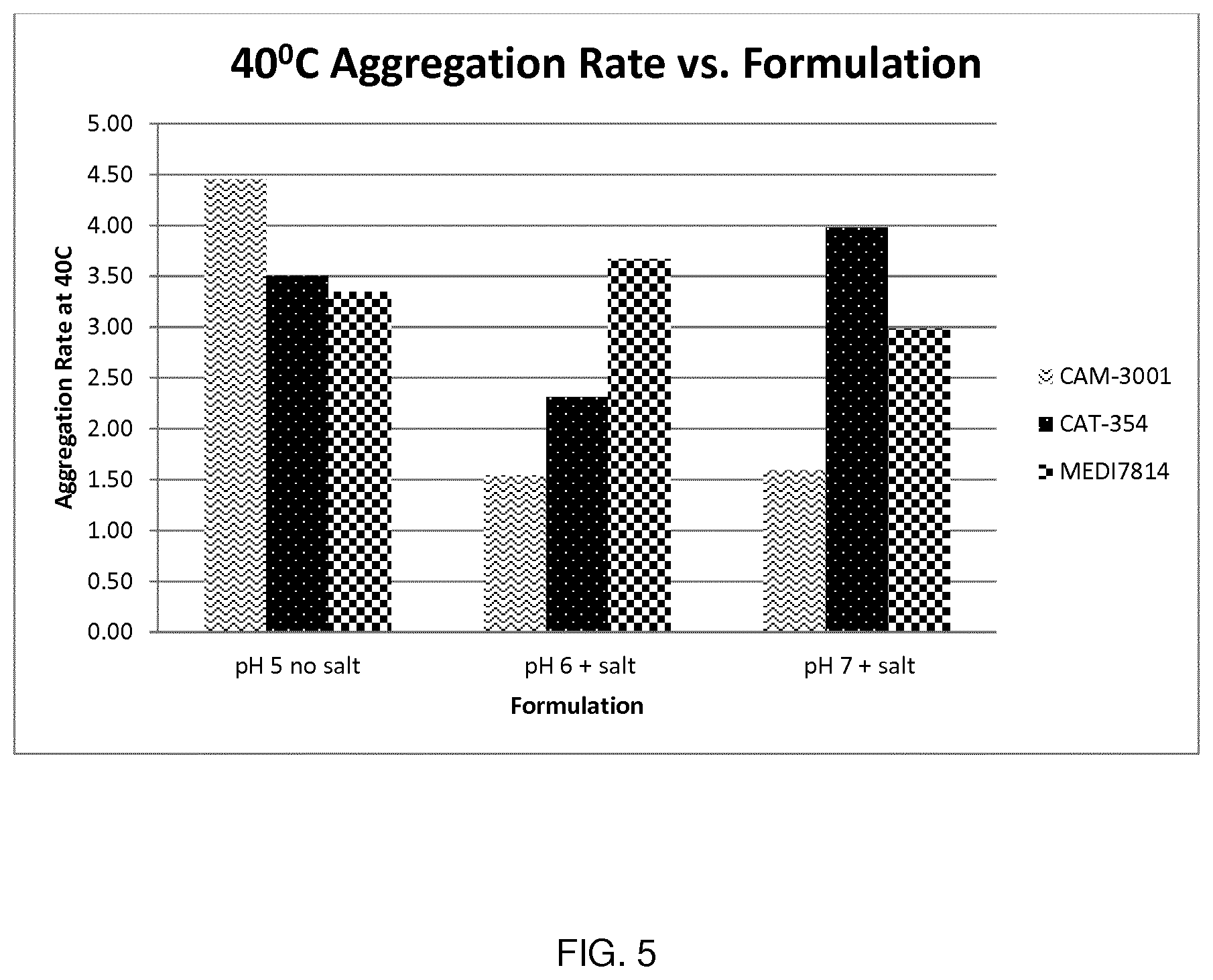
D00013
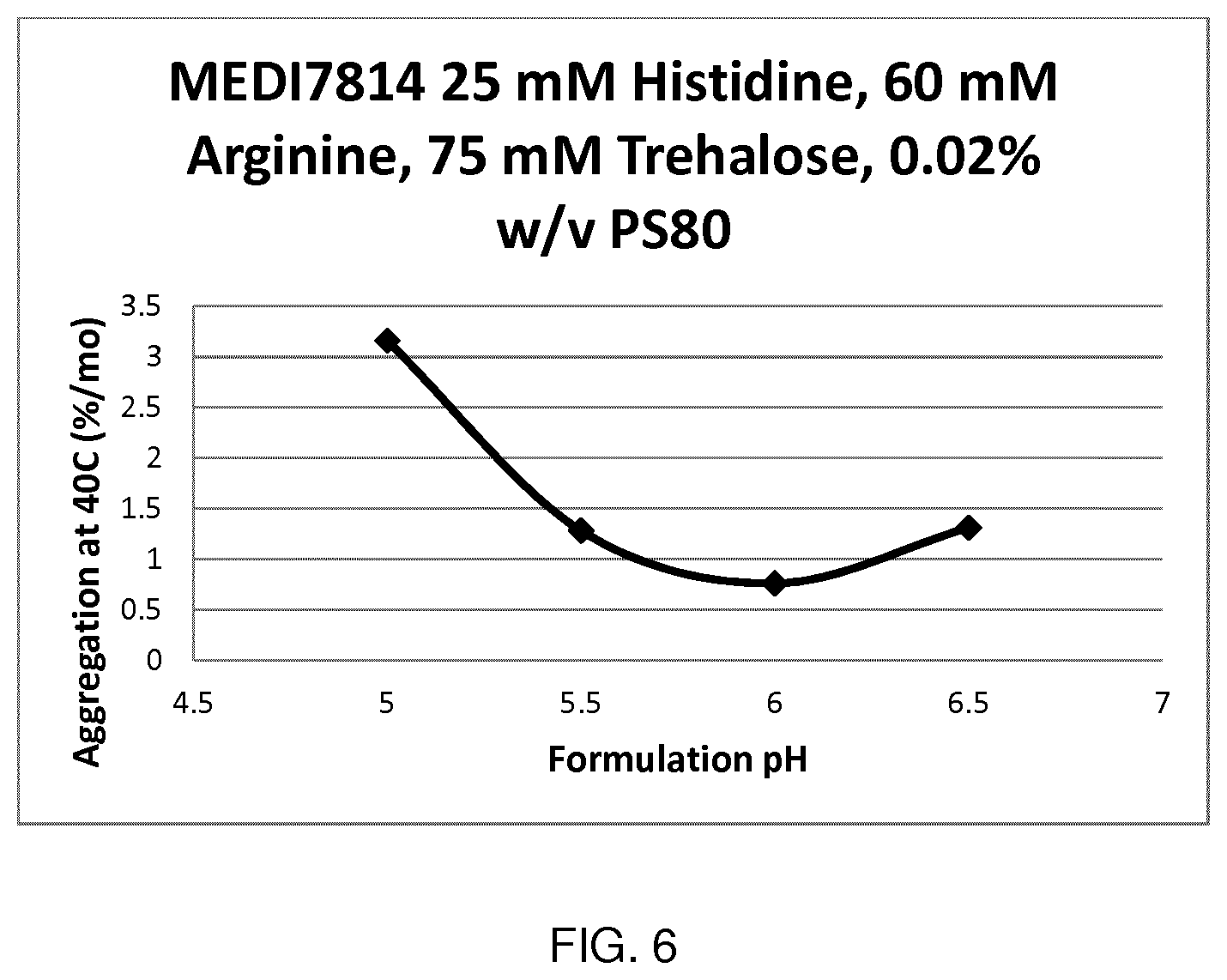
D00014
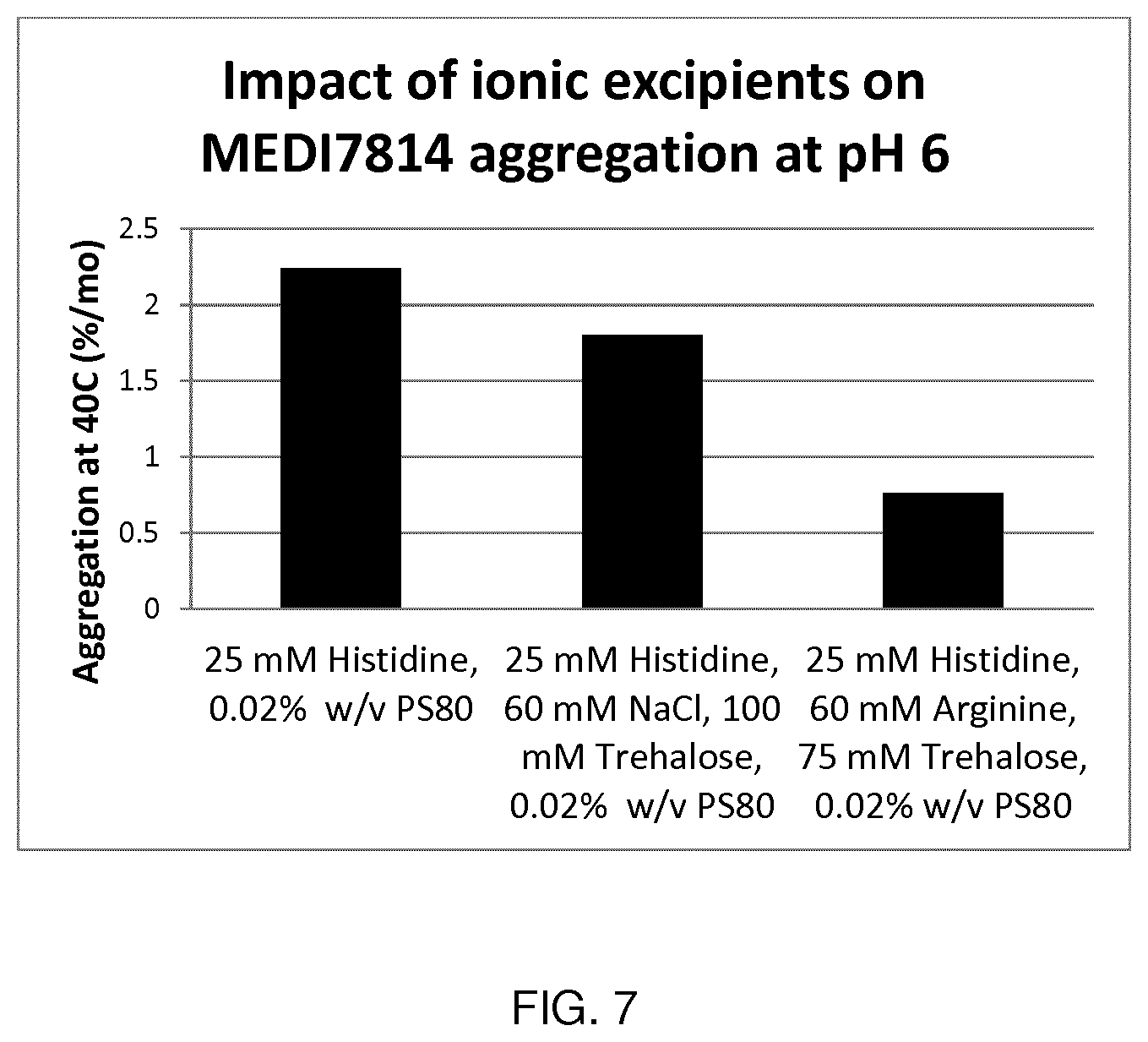
D00015
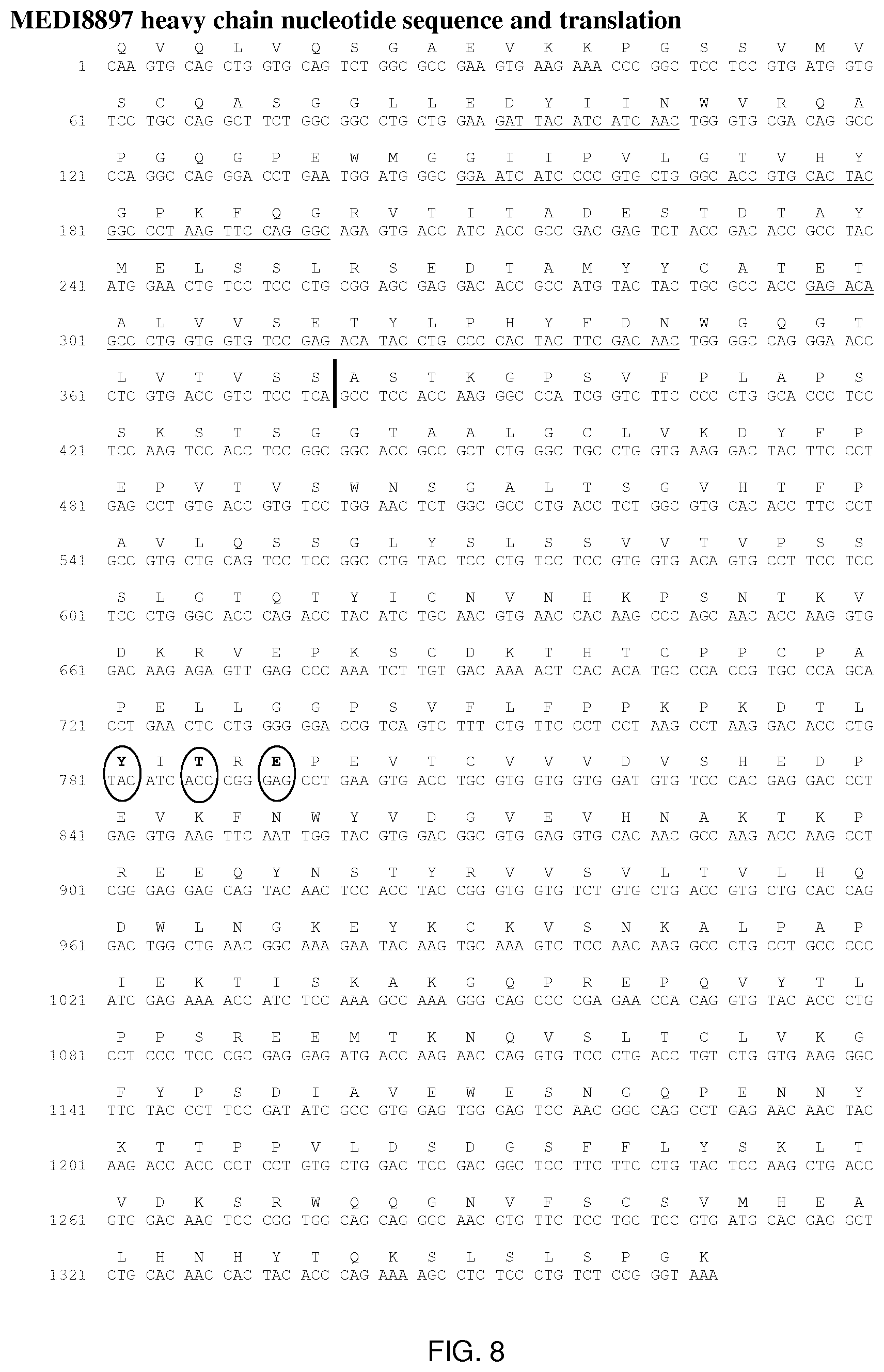
D00016
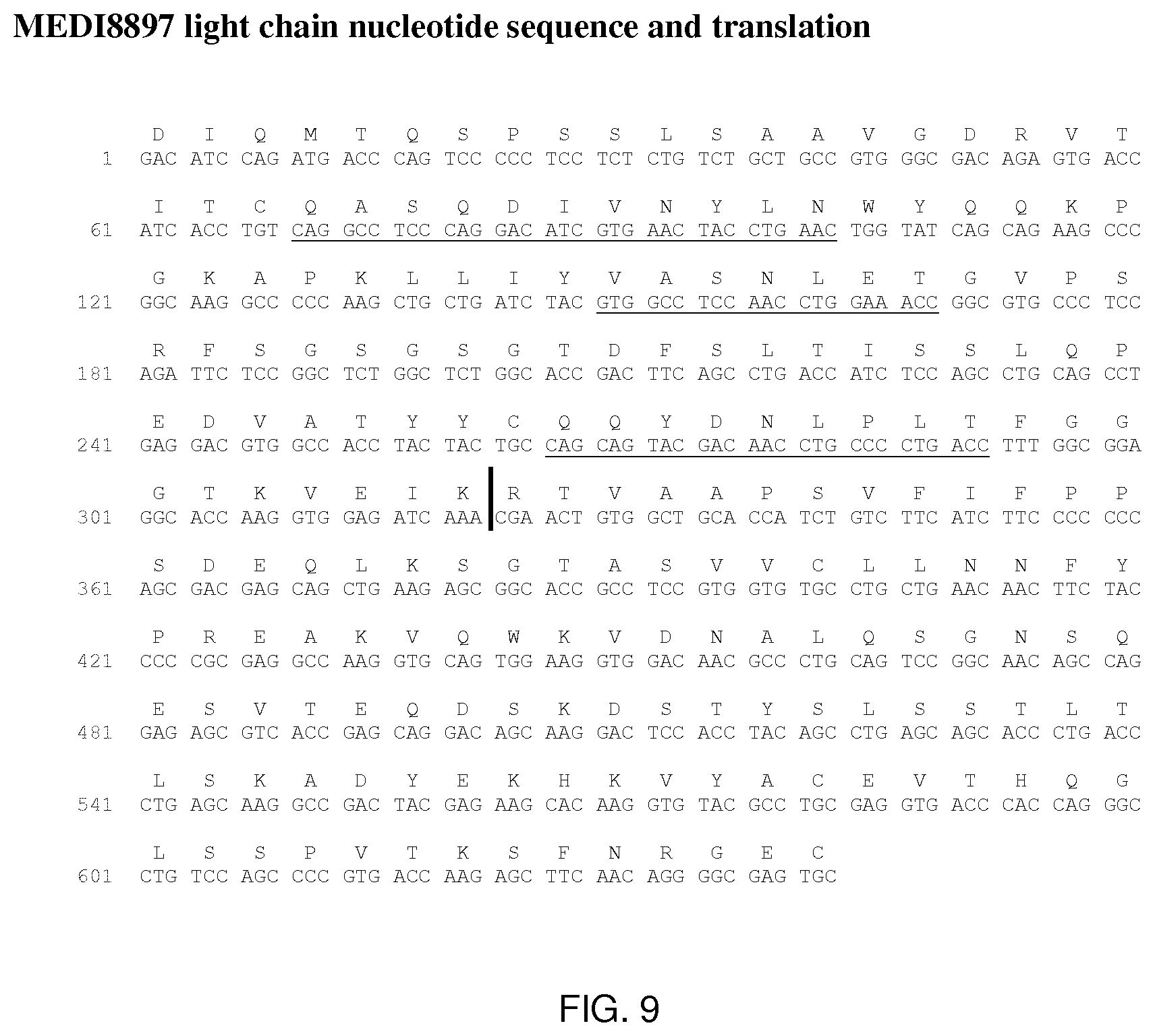
D00017
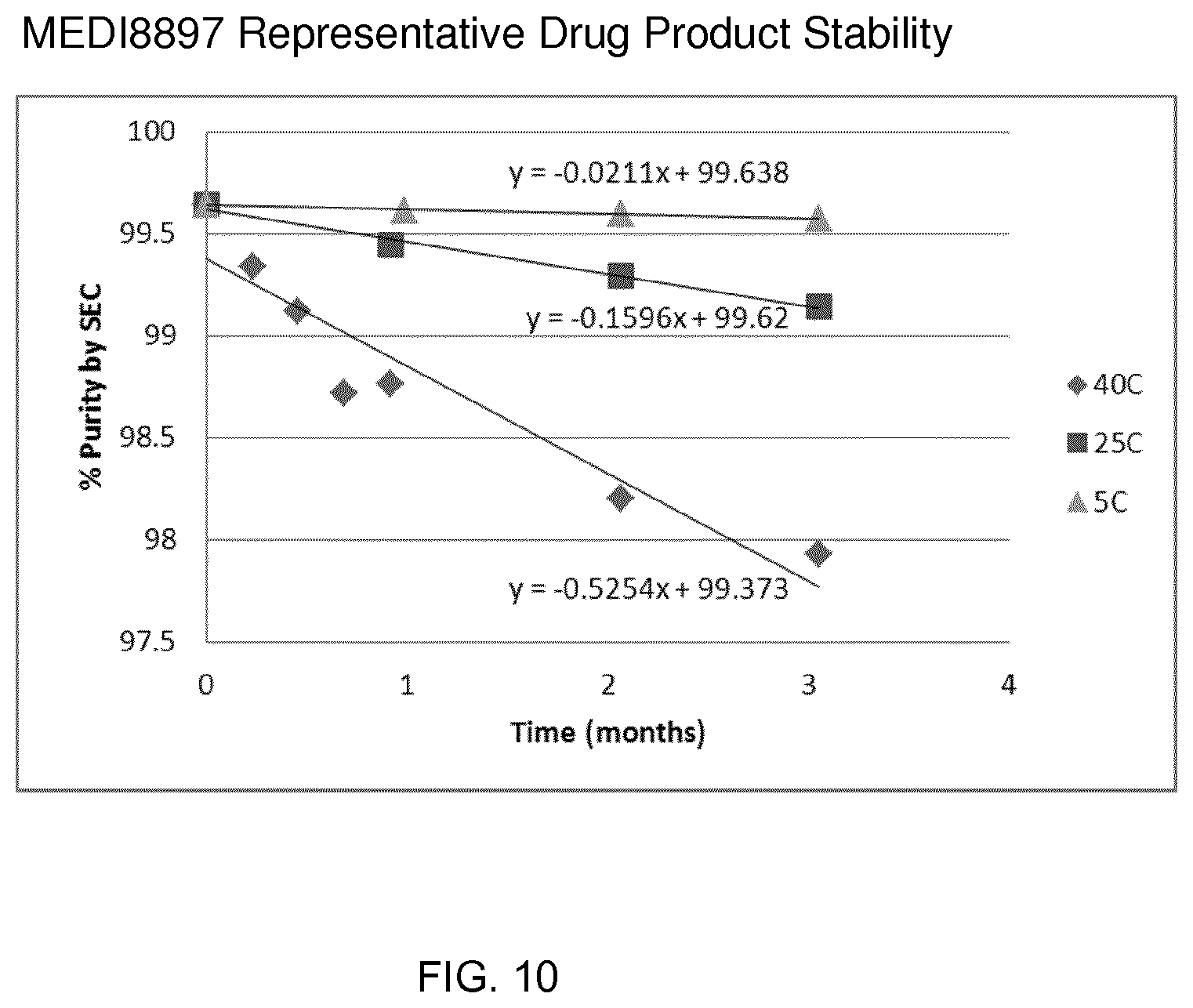
D00018
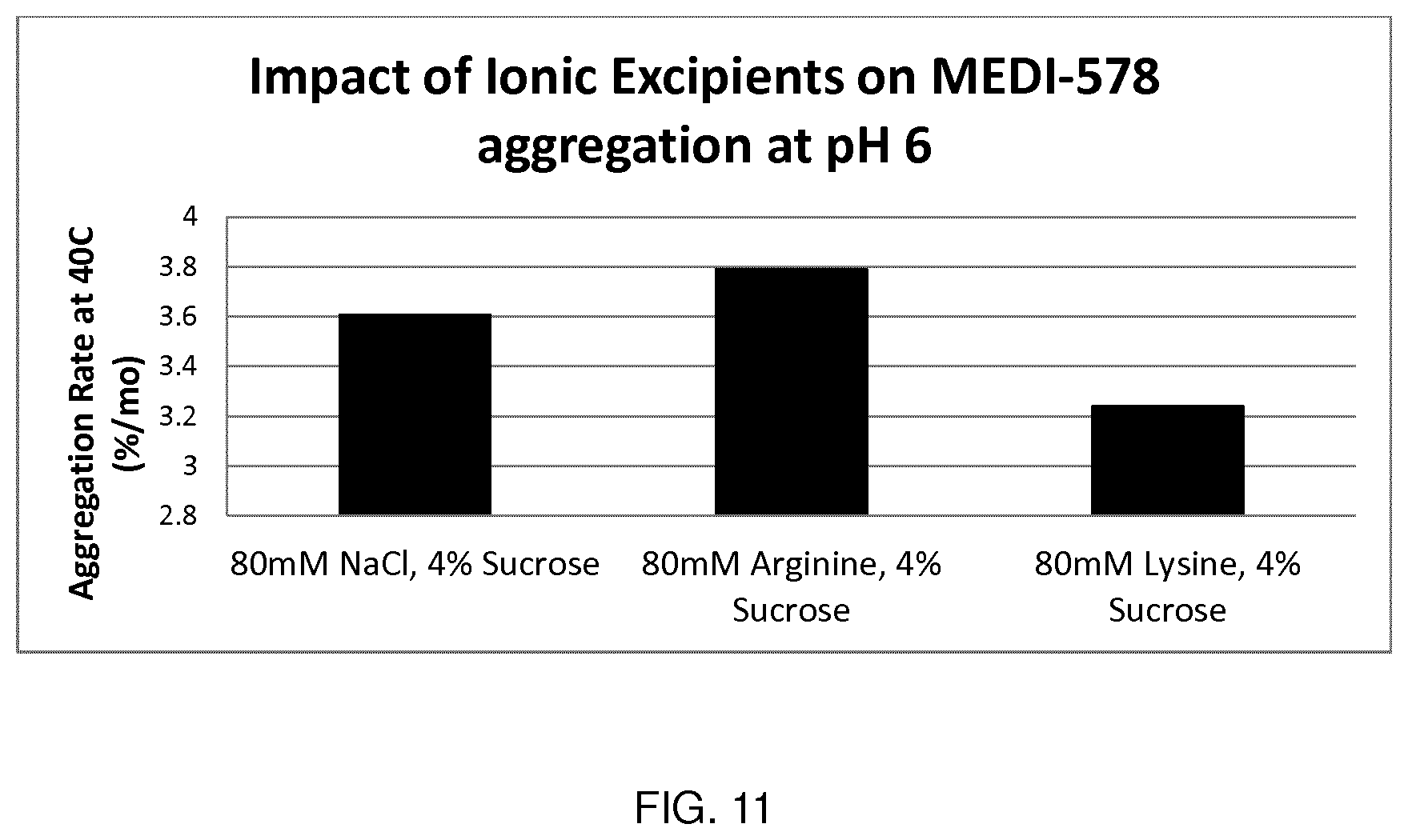
D00019
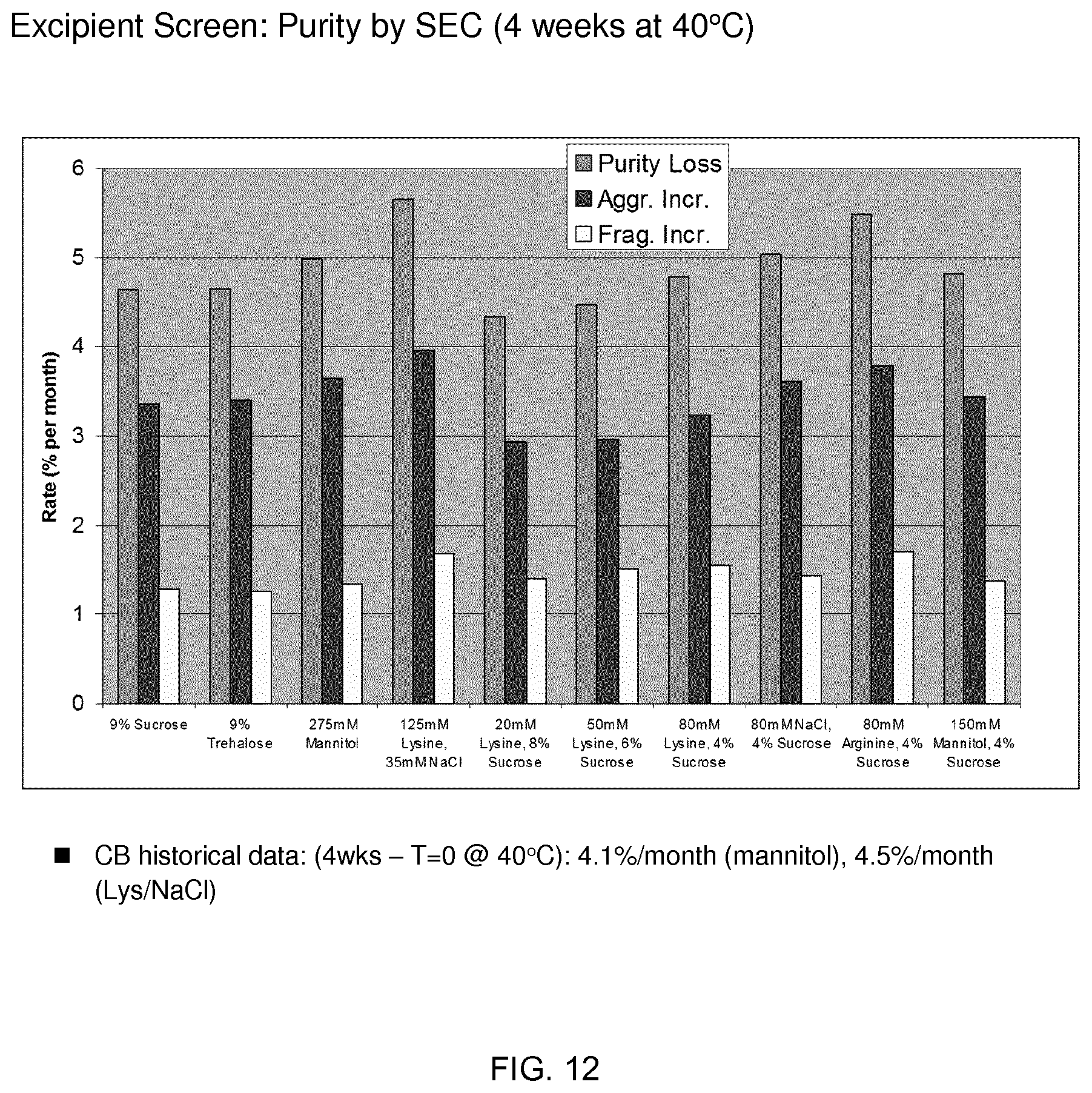
D00020
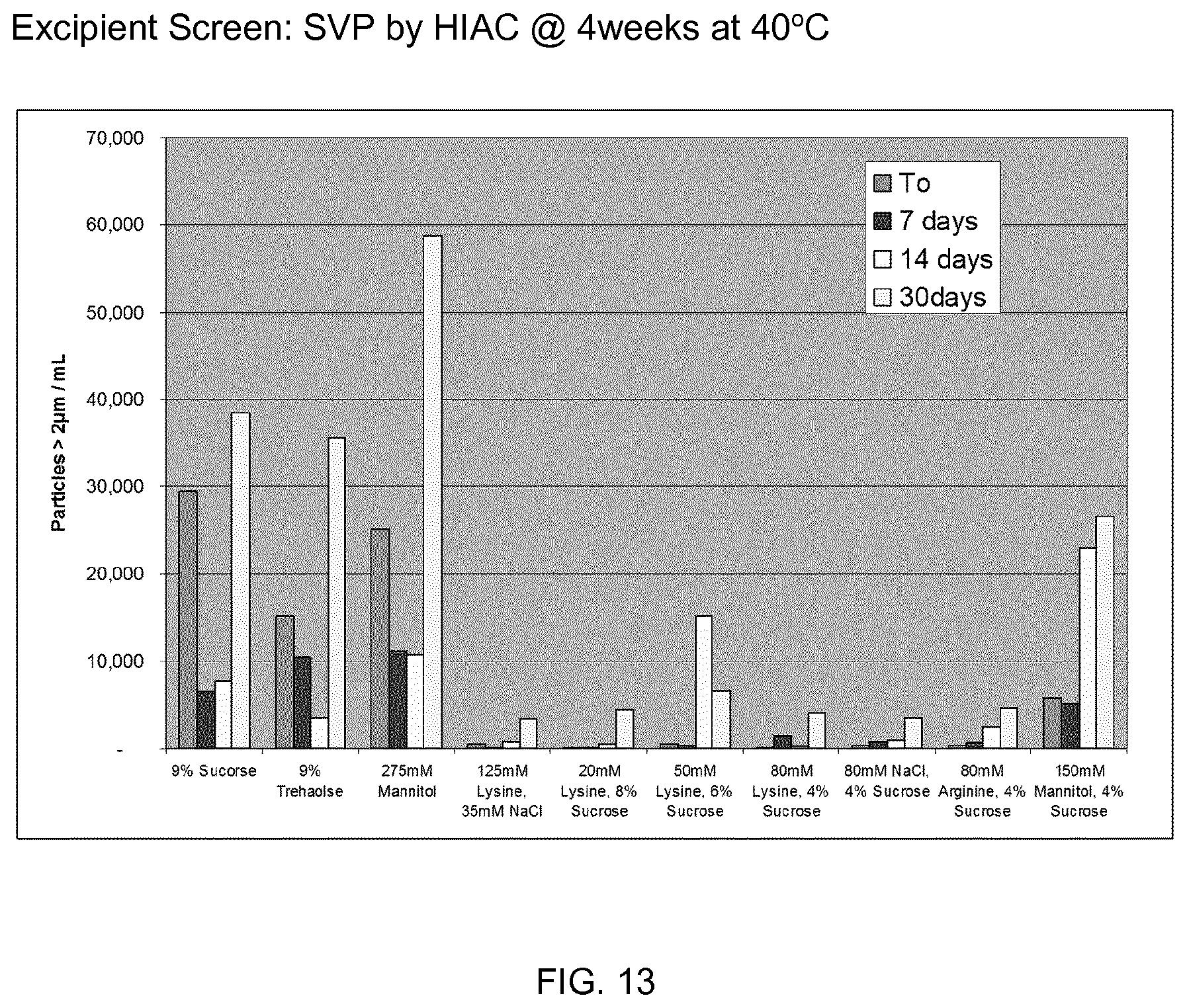
P00001

P00002

S00001
XML
uspto.report is an independent third-party trademark research tool that is not affiliated, endorsed, or sponsored by the United States Patent and Trademark Office (USPTO) or any other governmental organization. The information provided by uspto.report is based on publicly available data at the time of writing and is intended for informational purposes only.
While we strive to provide accurate and up-to-date information, we do not guarantee the accuracy, completeness, reliability, or suitability of the information displayed on this site. The use of this site is at your own risk. Any reliance you place on such information is therefore strictly at your own risk.
All official trademark data, including owner information, should be verified by visiting the official USPTO website at www.uspto.gov. This site is not intended to replace professional legal advice and should not be used as a substitute for consulting with a legal professional who is knowledgeable about trademark law.